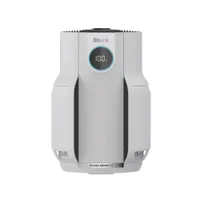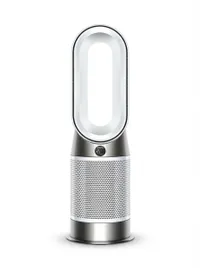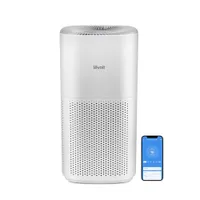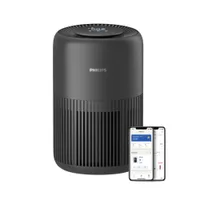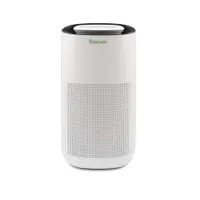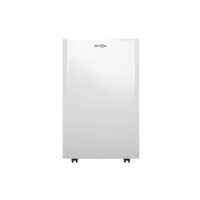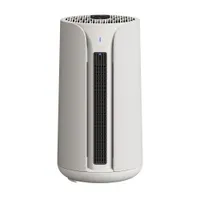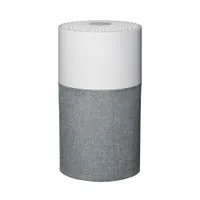I tested the best air purifiers against dust, cooking smells and smoke – these are the 6 I’d pick for a healthy home
The best air purifiers for improving indoor air quality, as tested by the Ideal Home team

Amy Lockwood
This guide was updated on 31/12/2025 to include the best Boxing Day deals on air purifiers we've tested.
The colder months of the year are synonymous with dusty homes, dry air and seasonal germs. Because of this, there's never been a better time to invest in an air purifier - and with one of these must-have appliances in tow, you can create a healthy and happy environment for your family. But with so many air purifiers on the market, choosing the right one can be hard.
That's where I come in. As Ideal Home's resident air quality expert, it's my job to try out the best air purifiers and dissect the specs to figure out which air purifier will suit which kind of household or family - or perhaps whether one of the best dehumidifiers would be better. To do this, an expert team of reviewers and I have followed our dedicated air purifier testing process to ensure we don't miss a thing.
Then, to compile this list of the best air purifiers on the market today, I've compared factors such as recommended room size, filter performance, ease of use, noise levels, and overall running costs to find which models are truly worth your investment. So, whether you want to keep the sniffles at bay or are just conscious of the air quality in your home, I have no doubts that one of these best-in-class air purifiers will fit the bill.
Air purifier Boxing Day deals
This Shark air purifier offers scent cartridges that make your home smell delicious as it cleans it. It's now reduced by 18% at Amazon, which is the cheapest place we've found it on offer today.
If you are looking for a slim and stylish multi-tasking air purifier that heats and cools, this is the time to snap up this Dyson purifier.
You can grab our favourite air purifier for larger spaces with a whopping 20% off right now.
The quick list
Short on time? This quick list is an overview of the very best air filters. You'll find more information on each air purifier and why our testers recommend it if you keep on scrolling.
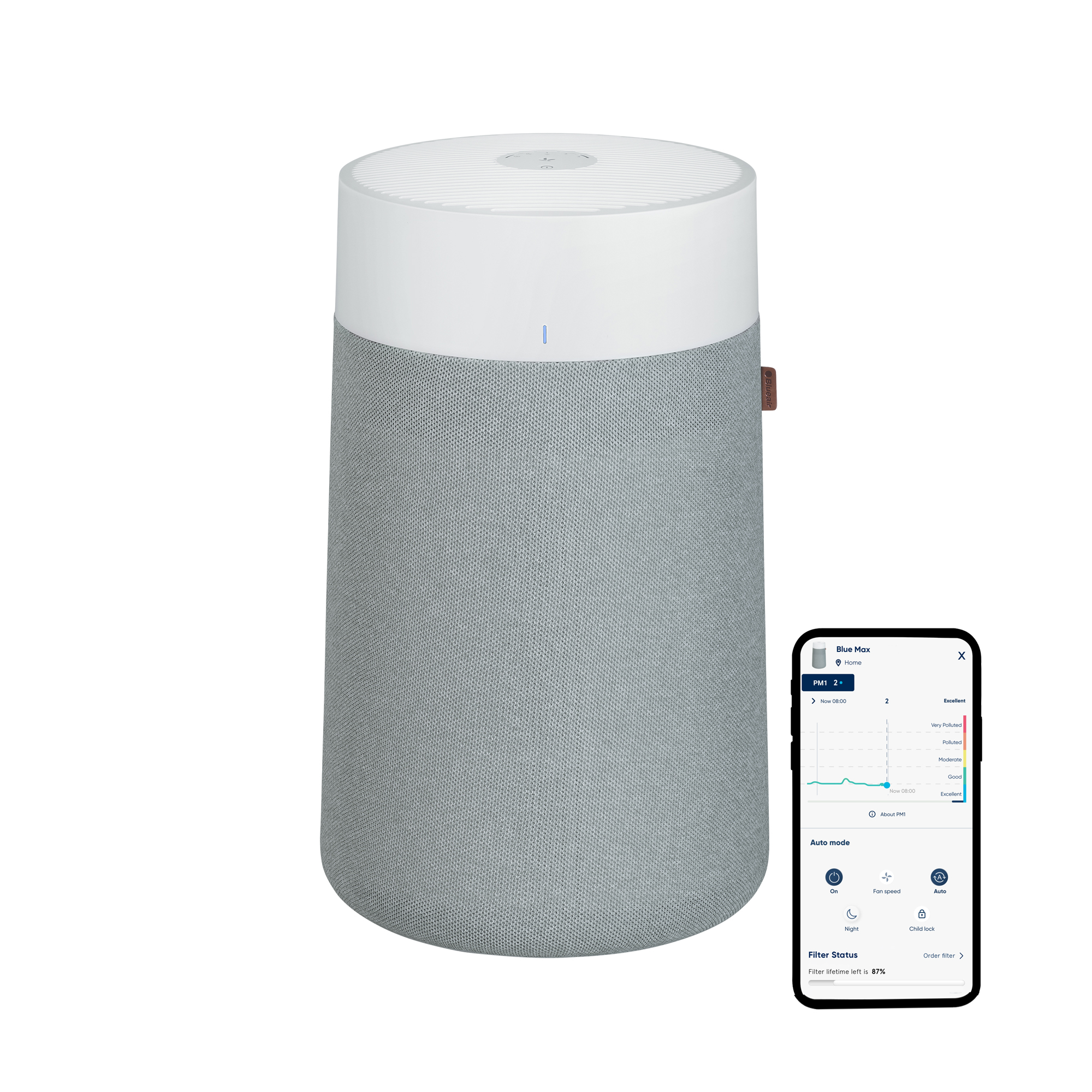
Best overall
As long as you don't have a space over 48m² to filter, we think this is the best air purifier you can buy. Our top recommendation combines first-class performance that filters out 99.97% of airborne particles down to 0.1 microns in size (most air purifiers only promise to filter down to 0.3 microns), a relatively affordable price tag, and stylish user-friendly design.

Best budget
This air purifier may be cheaper than other models on the market, but it's still suitable for rooms up to 22m² and uses HEPASilent dual filtration technology to help you breathe easier. It also comes with a Night mode and is never louder than 48dB. Plus, it has smart app connectivity, so it can be controlled via your phone. And while we didn't rate it as highly as the 3250i, it's ideal if you're on a budget.
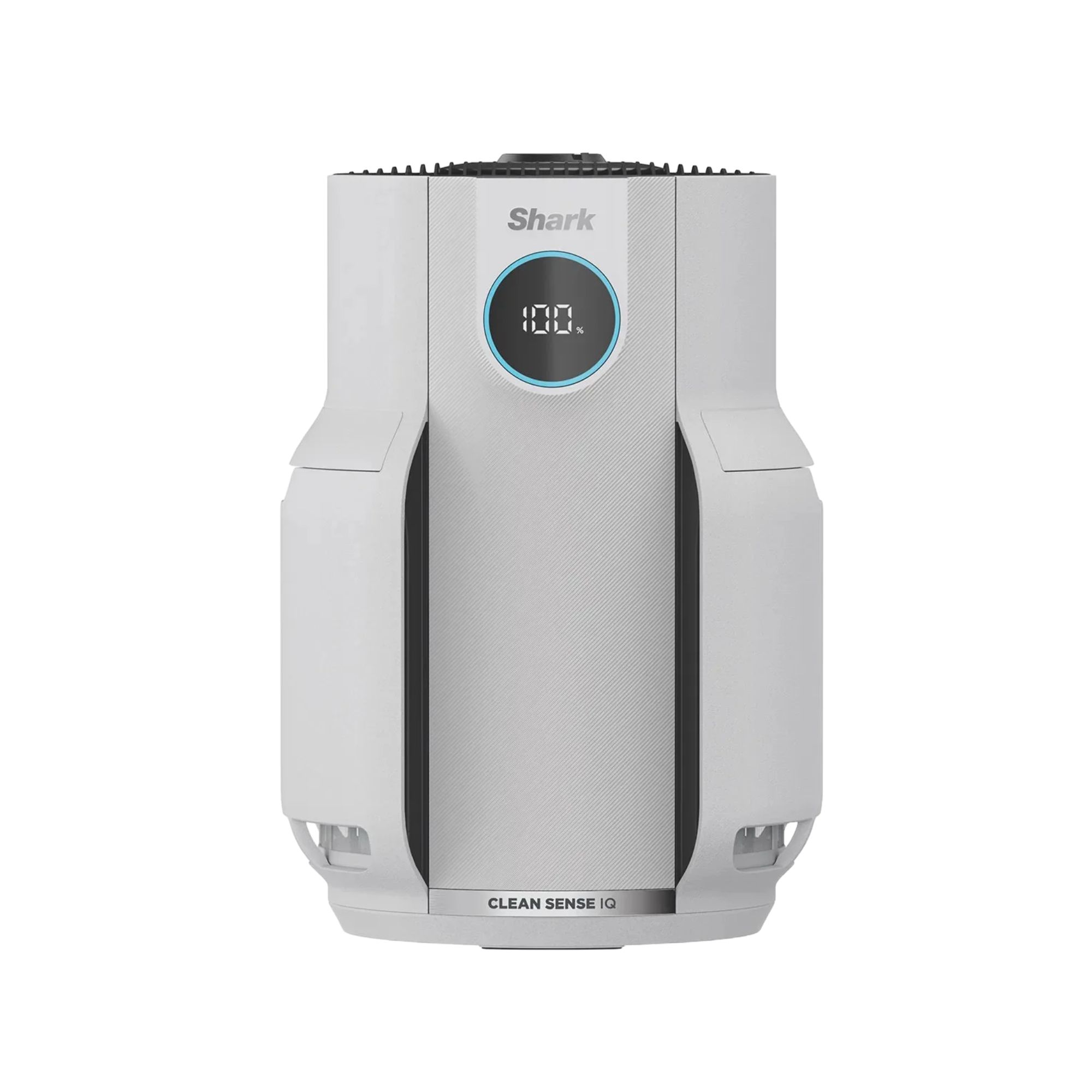
Best for small spaces
If you want a long-lasting model for smaller homes, Shark's NeverChange5 Air Purifier comes with the guarantee that you won't need to change the filter for five years - saving you a fortune on replacements. With the brand's innovative CleanSenseIQ technology, it's also incredibly responsive to drops in air quality and even includes an Anti-Odour cartridge to banish odours while it cleans your home.
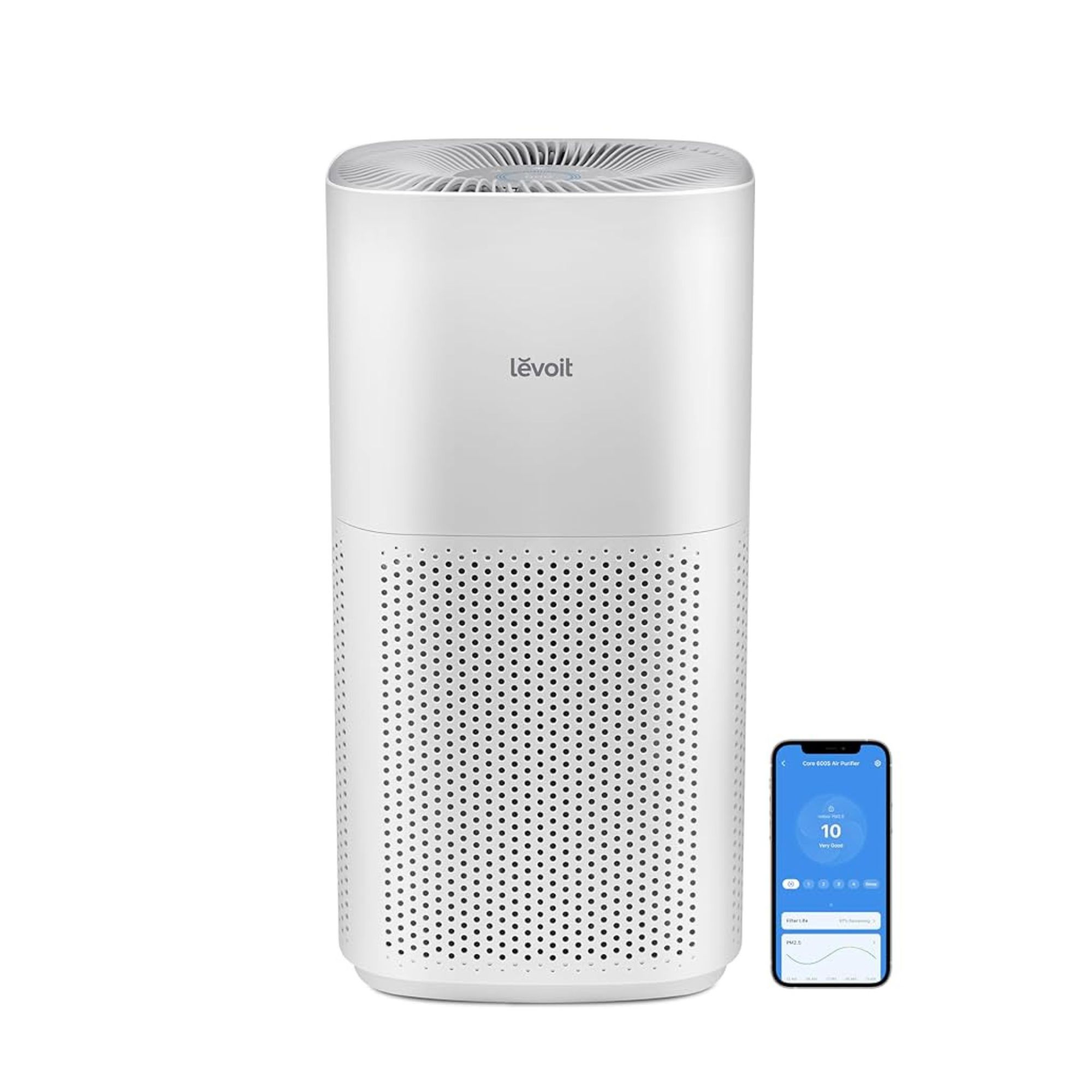
Best for larger spaces
With the ability to purify spaces up to 294m², the Levoit Core 600s is a whole-home hero. Of course, a bigger purifying capacity means that this is one of the biggest air purifiers (in size) that we've tested so far, but it's well worth the investment if you want impressive air-cleaning performance on a larger scale. Plus, it still looks sleek and offers all the smart features you need
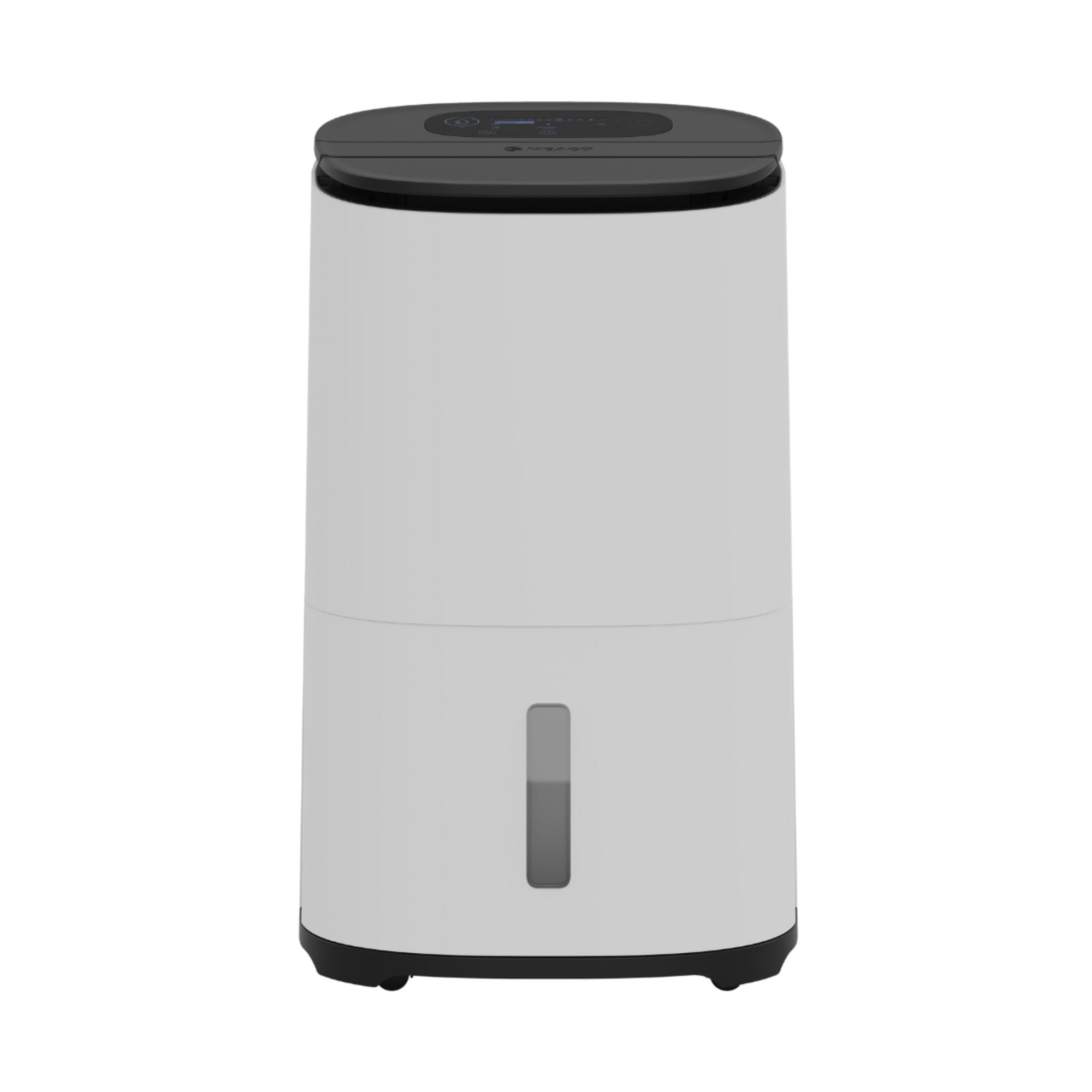
Best air purifier and dehumidifier
Combining air purifying power with one of the best dehumidifiers, this 2-in-1 appliance is the ultimate space-saver. While it's primarily a dehumidifier, the built-in HEPA filter means that it'll ensure a moisture-free, healthy home. It also comes with Wi-Fi connectivity, a timer, and an auto mode for convenience.
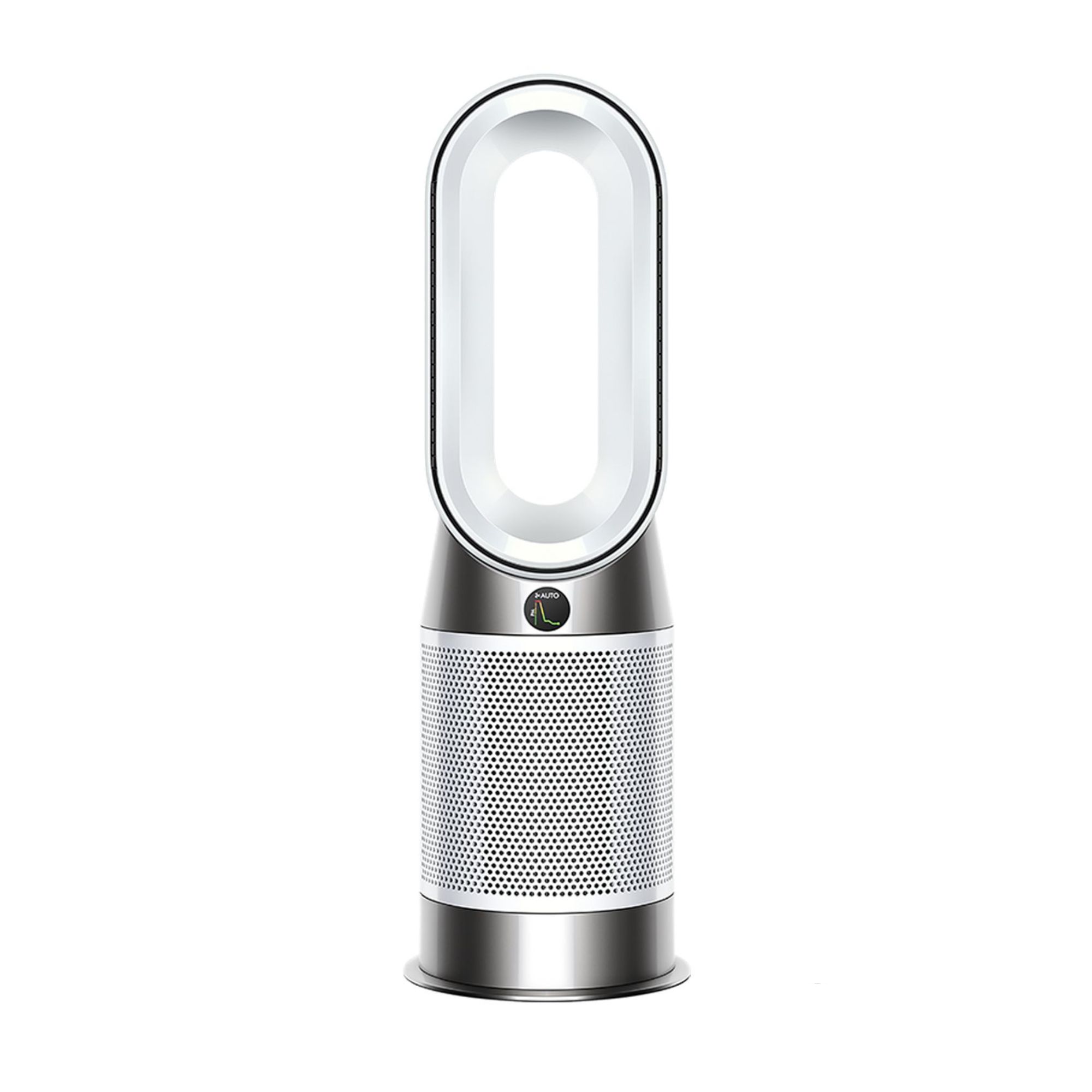
Best air purifier fan + heater
This 3-in-1 appliance will serve as your air purifier, fan and heater - making it the ultimate year-round appliance. It offers room coverage up to 81m³, and even comes with an oscillation feature to ensure purified air is reaching every corner of your space. The 360 Combi Glass HEPA + Activated Carbon filter, coupled with the handy Auto mode, makes it ideal for everyday use, but it is on the pricier side.
Best air purifiers 2025
Best air purifier overall






Specifications
Reasons to buy
Reasons to avoid
The Blueair Blue Max 3250i Air Purifier offers a great combination of responsive performance combined with stylish design and a relatively affordable price point, making it our top recommendation for the best air purifier overall.
It's designed to filter the air in spaces up to 48m² and offers a decent CADR (clean air delivery rate) of 239 m³/h. The 3-Stage HEPASilent Filter also can remove 99.97% of airborne particles down to 0.1 microns in size, whereas many air purifiers at this price point only promise the removal of particulates down to 0.3 microns in size.
In practice, our tests found that the filter made a difference to how the Blueair Blue Max 3250i Air Purifier performed, with this air purifier being one of the fastest to detect dips in air quality and the quickest to improve air quality levels in a small to medium-sized space. It also performed the best at odour removal, clearing the test kitchen of bacon fumes quicker than any other air purifier we tested.
All importantly, the Blueair Blue Max 3250i Air Purifier also offers a built-in air quality sensor that makes managing indoor air quality super simple. Simply turn on the Auto mode and the purifier does all the hard work for you, switching into standby mode when the air quality is good, and automatically kicking into gear should air quality drop.
The coloured air quality indicator light on the front of the air purifier is a nice user-friendly touch, and, although in testing we thought the on-board controls could be a little slicker, the option to connect to Wi-Fi and operate the air purifier via the Smart App, or to connect it to Amazon Alexa or Google Assistant to use voice-activated commands, will be a great plus point for many users.
Read our Blueair Blue Max 3250i Air Purifier review for more details.
Best budget air purifier

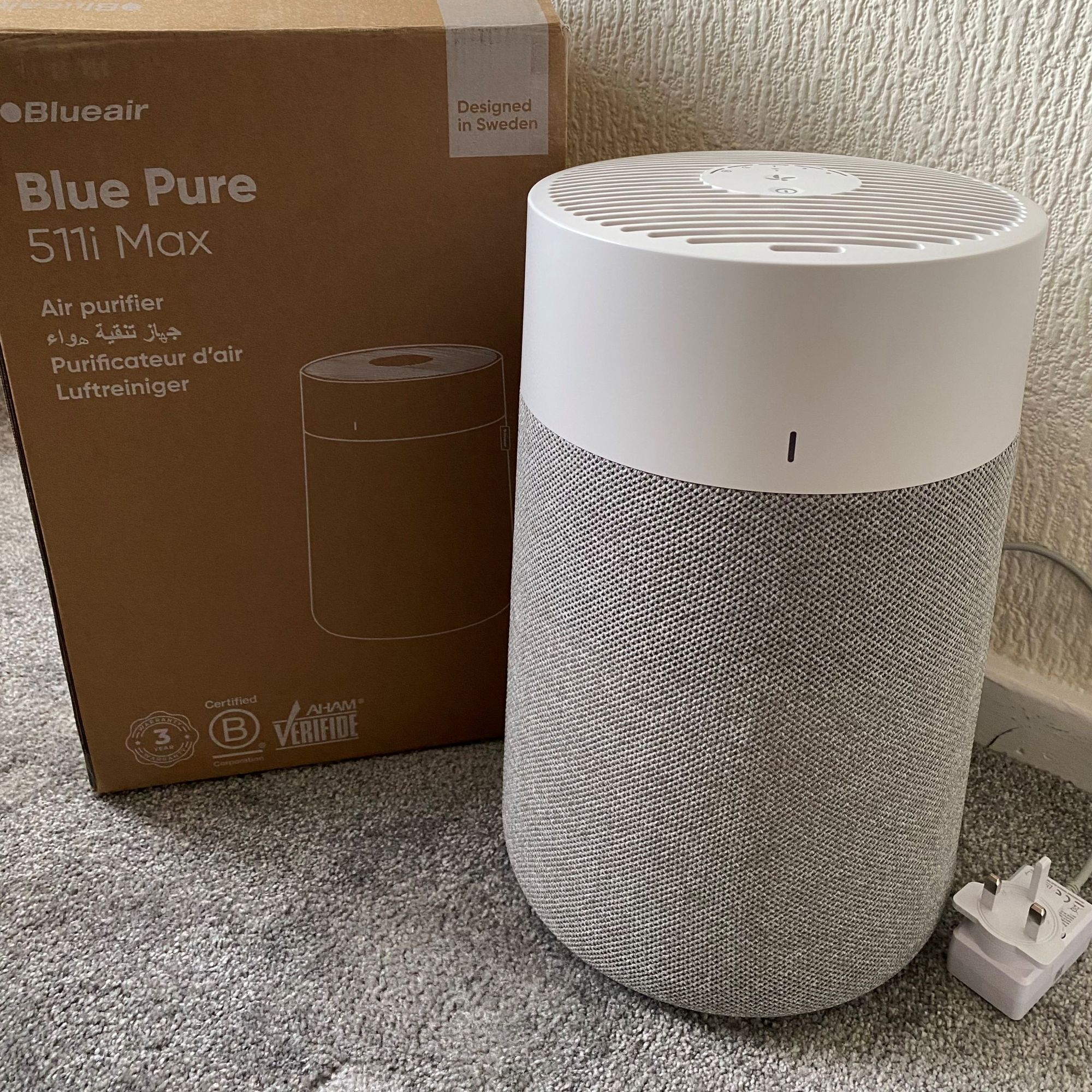
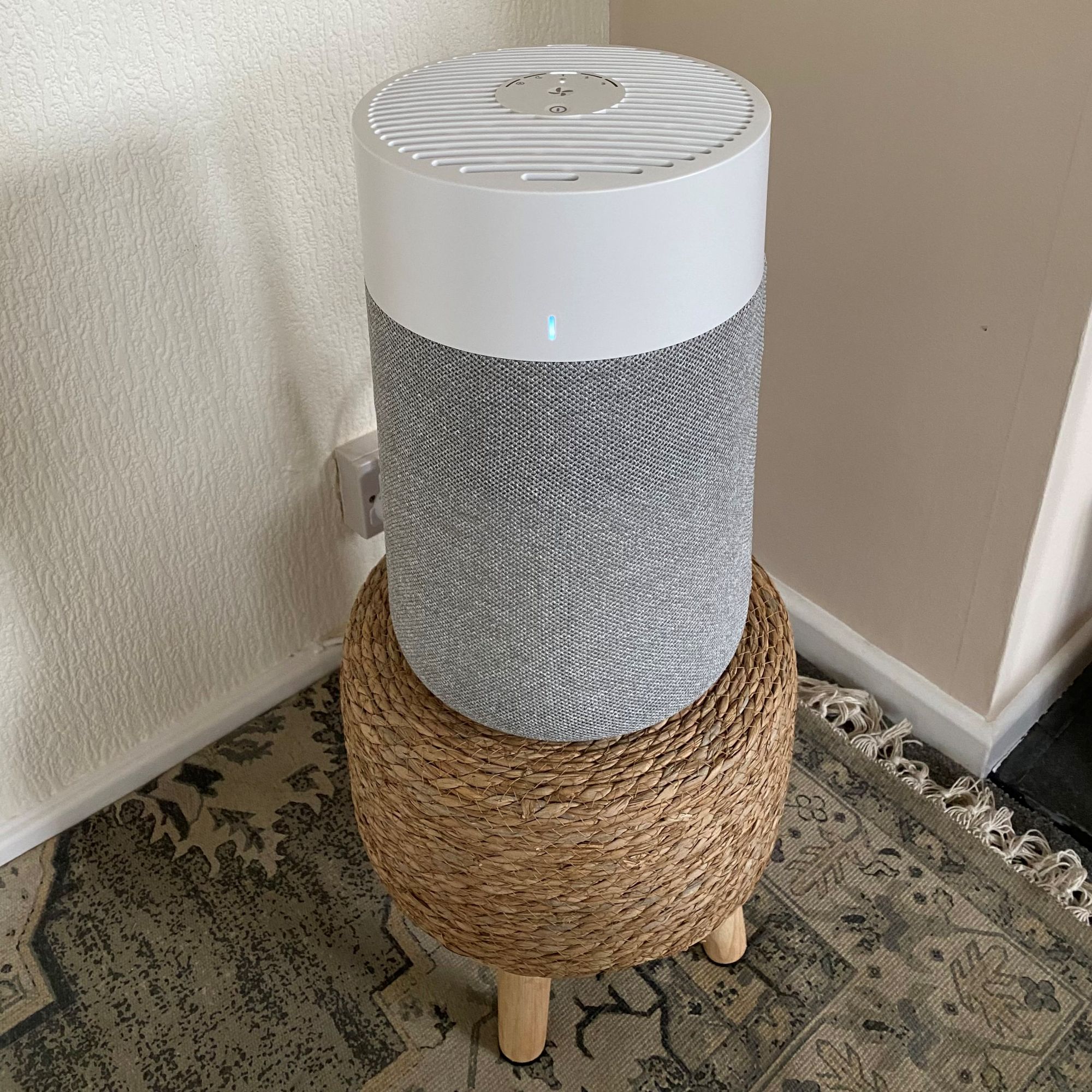
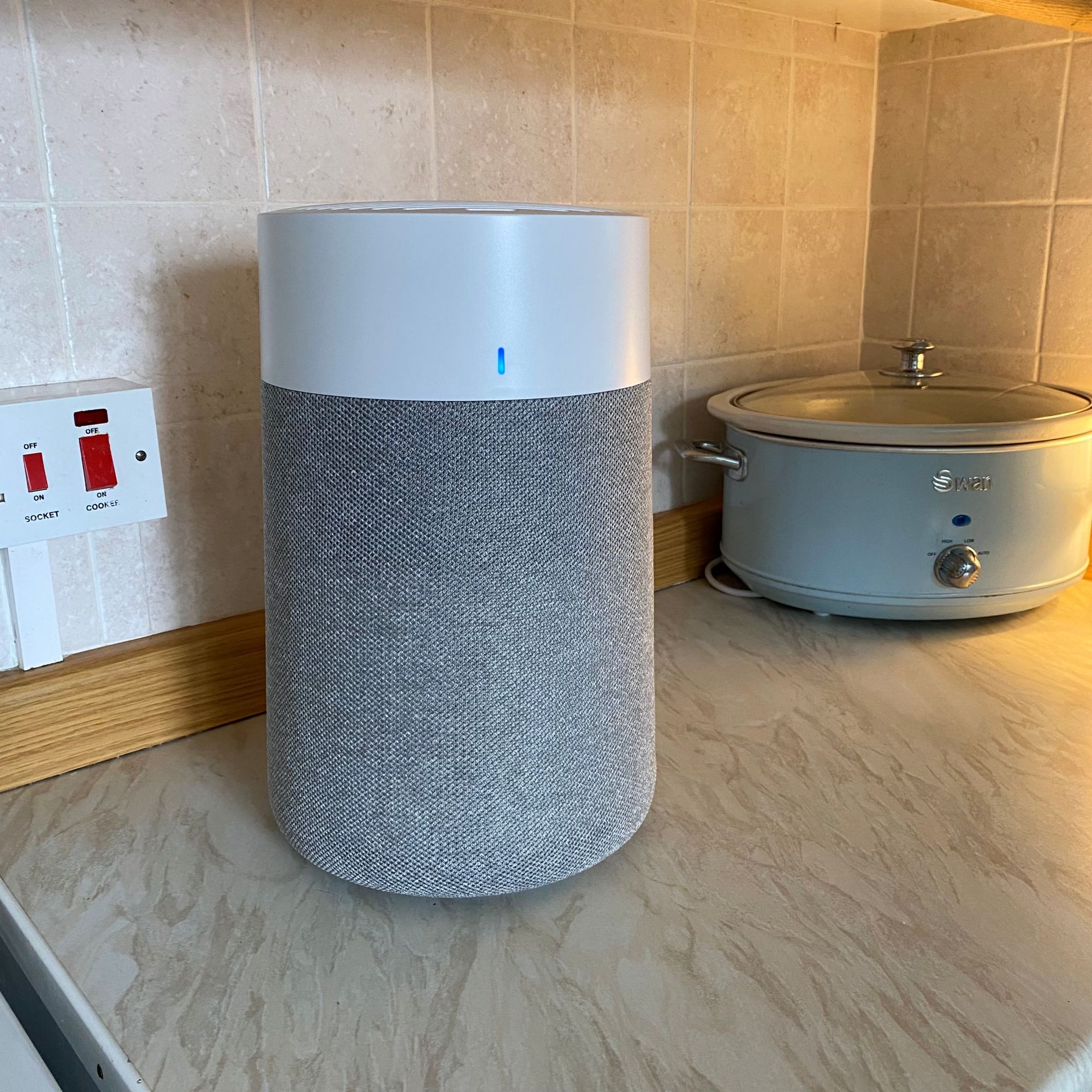
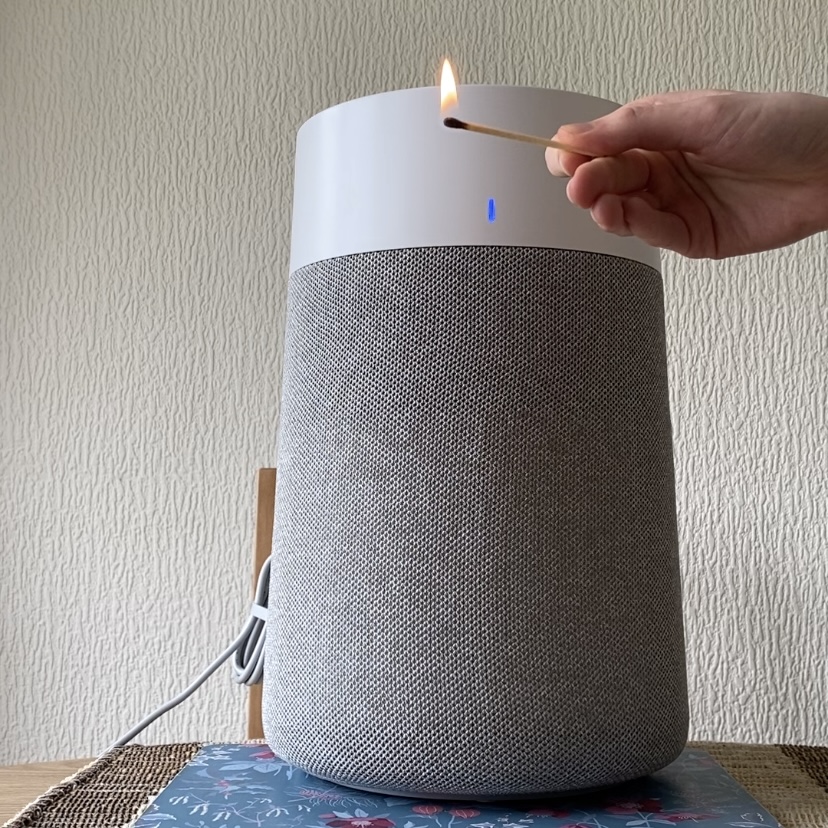
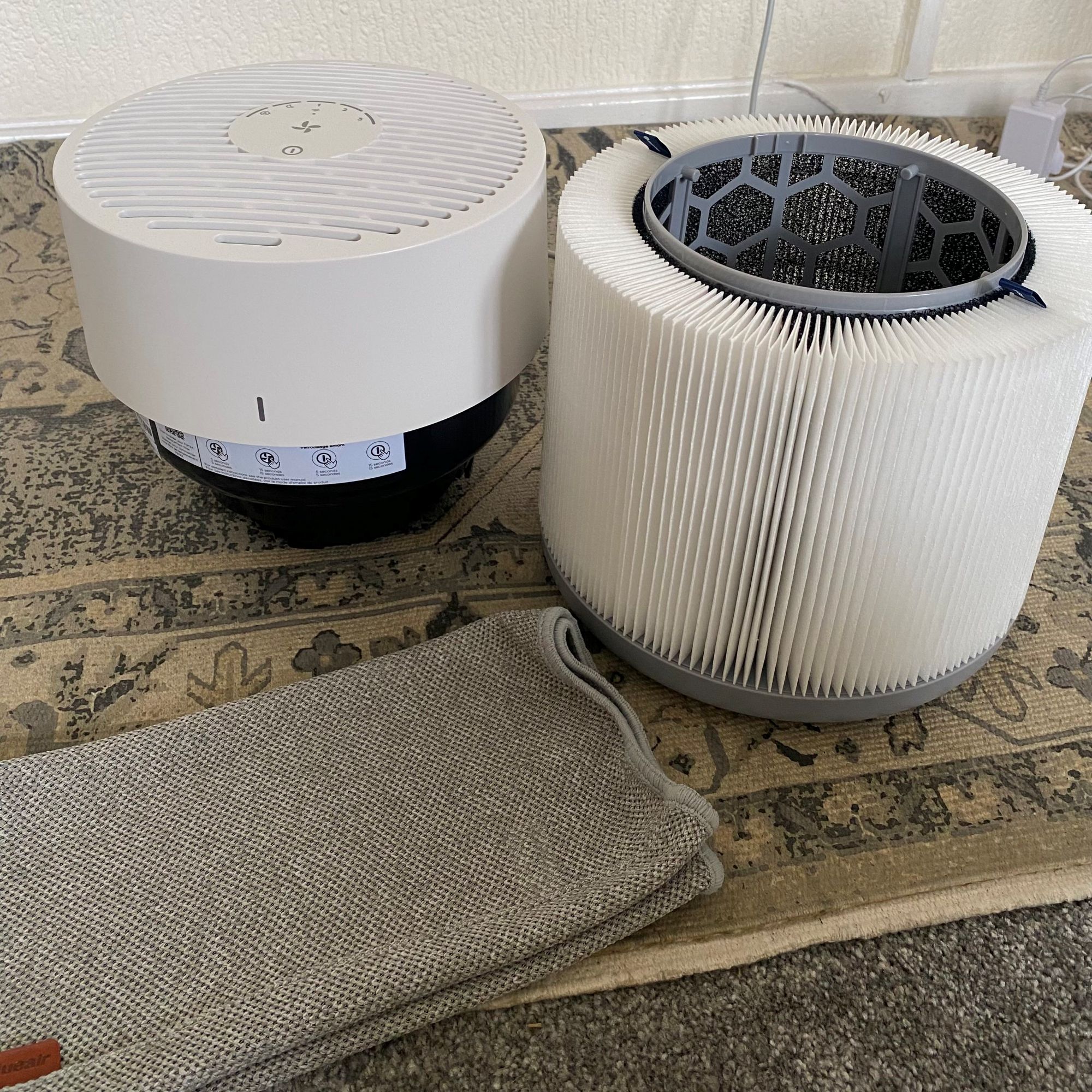

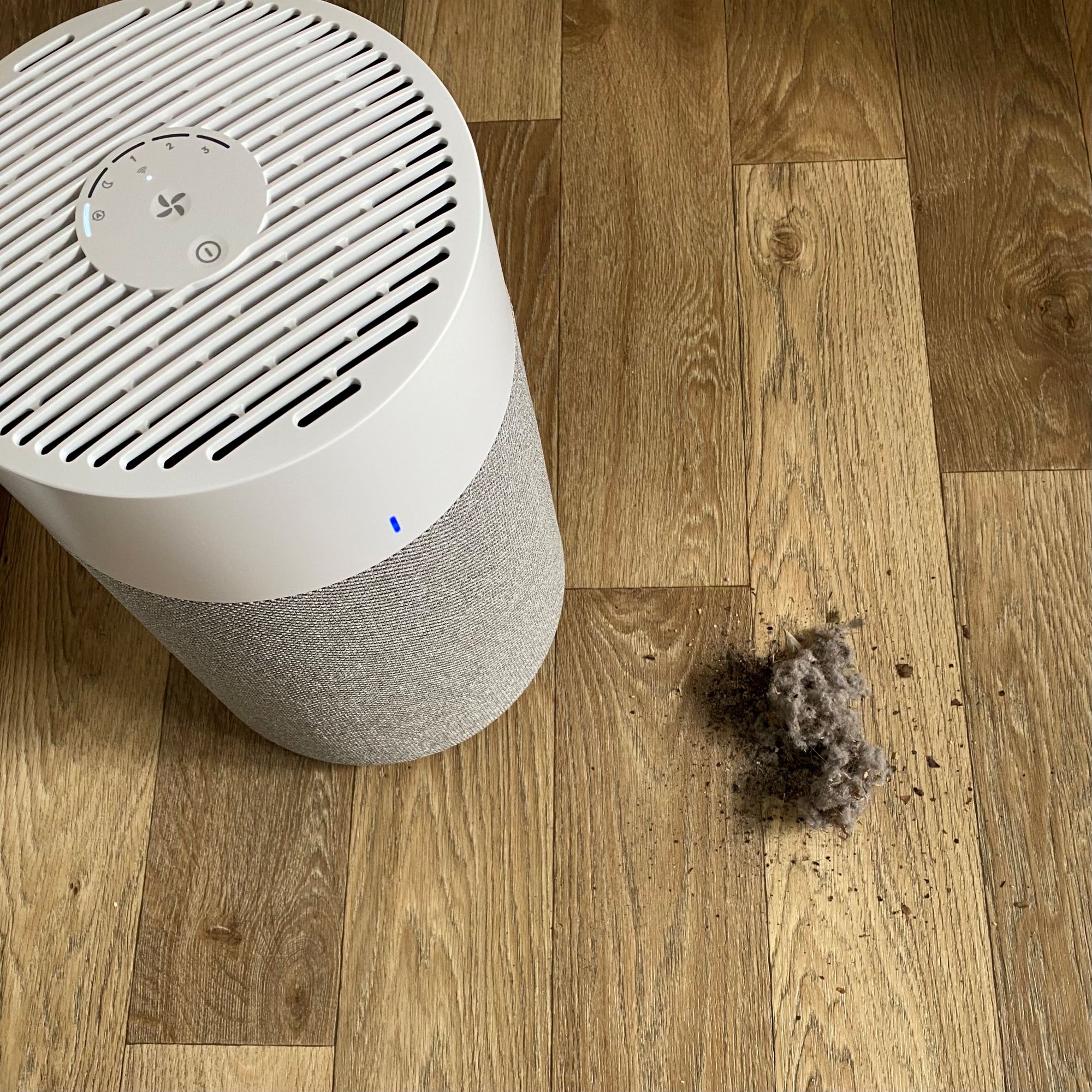
Specifications
Reasons to buy
Reasons to avoid
We've now tested multiple Blueair air purifiers and all have scored highly in our review process. The Blue Pure 511i is the brand's updated and more modern version of the Blueair Pure 511, which we also awarded a 4-star review. It's also perfect for those on a budget, thanks to its sub-£130 price tag.
The Blue Pure 511i looks very similar to our top-rated Blueair air purifier, the Blue Max 3250i, but is better suited to smaller spaces up to 22m². It can still remove up to 99.97% of airborne particles down to 0.1 microns, however, which makes it still very powerful for such an affordable air purifier.
It's also a significant improvement on the 511, as this updated model now comes with Wi-Fi connectivity and a built-in air quality sensor, which allowed our tester to assess and manage her air quality from her phone or the onboard controls. She also found the Auto mode to be both responsive and quiet, reacting to everyday changes in air quality as well as the changes brought on by our controlled air purifier tests.
Our tester did find that the Blueair 511i was slightly slower to respond to dust and cooking odours, and it was a little larger than she would have liked, but she agrees that it's an affordable all-rounder that most would be happy with.
Read our Blueair Blue 511i Max Smart WiFi Air Purifier review for more details.
Best air purifier for small spaces

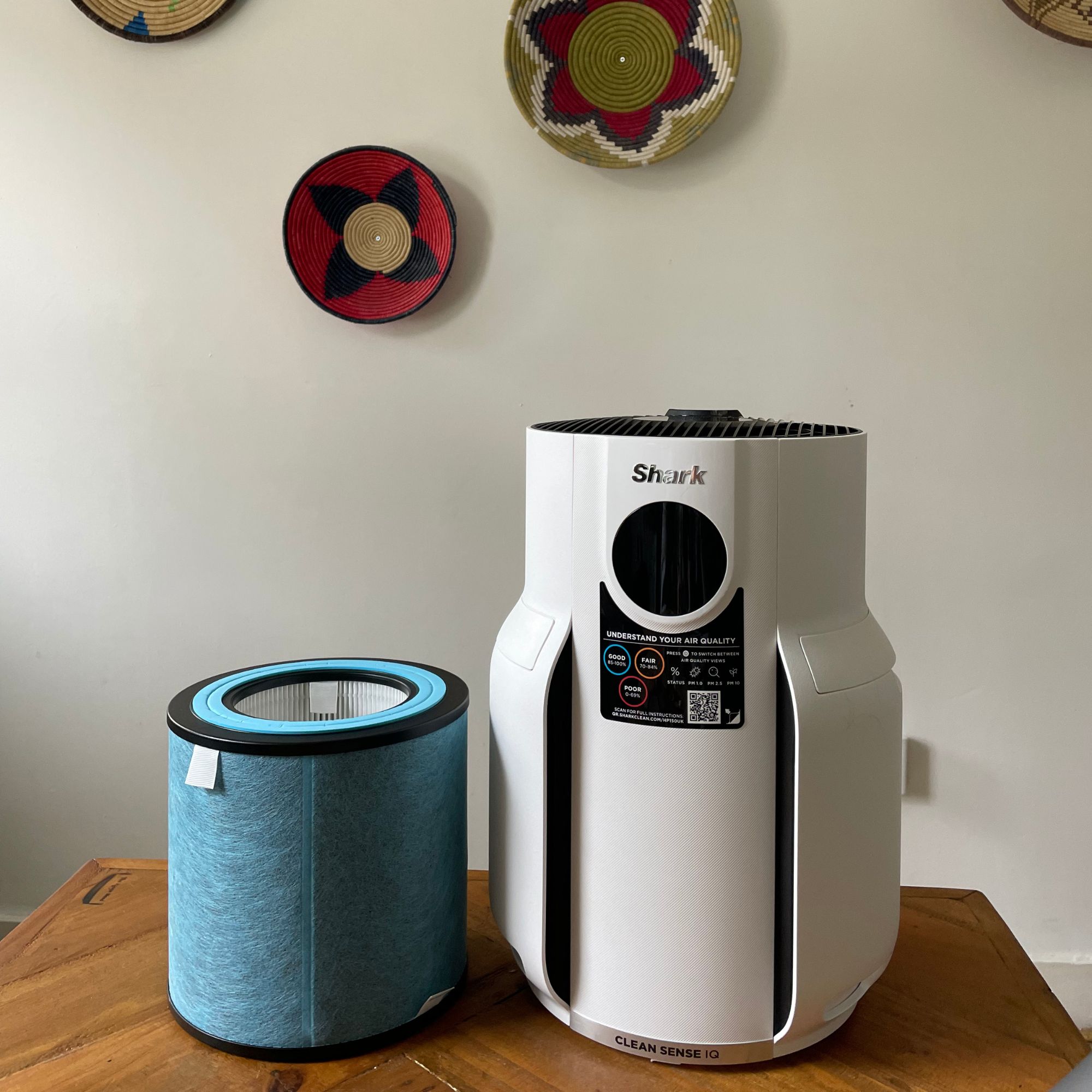
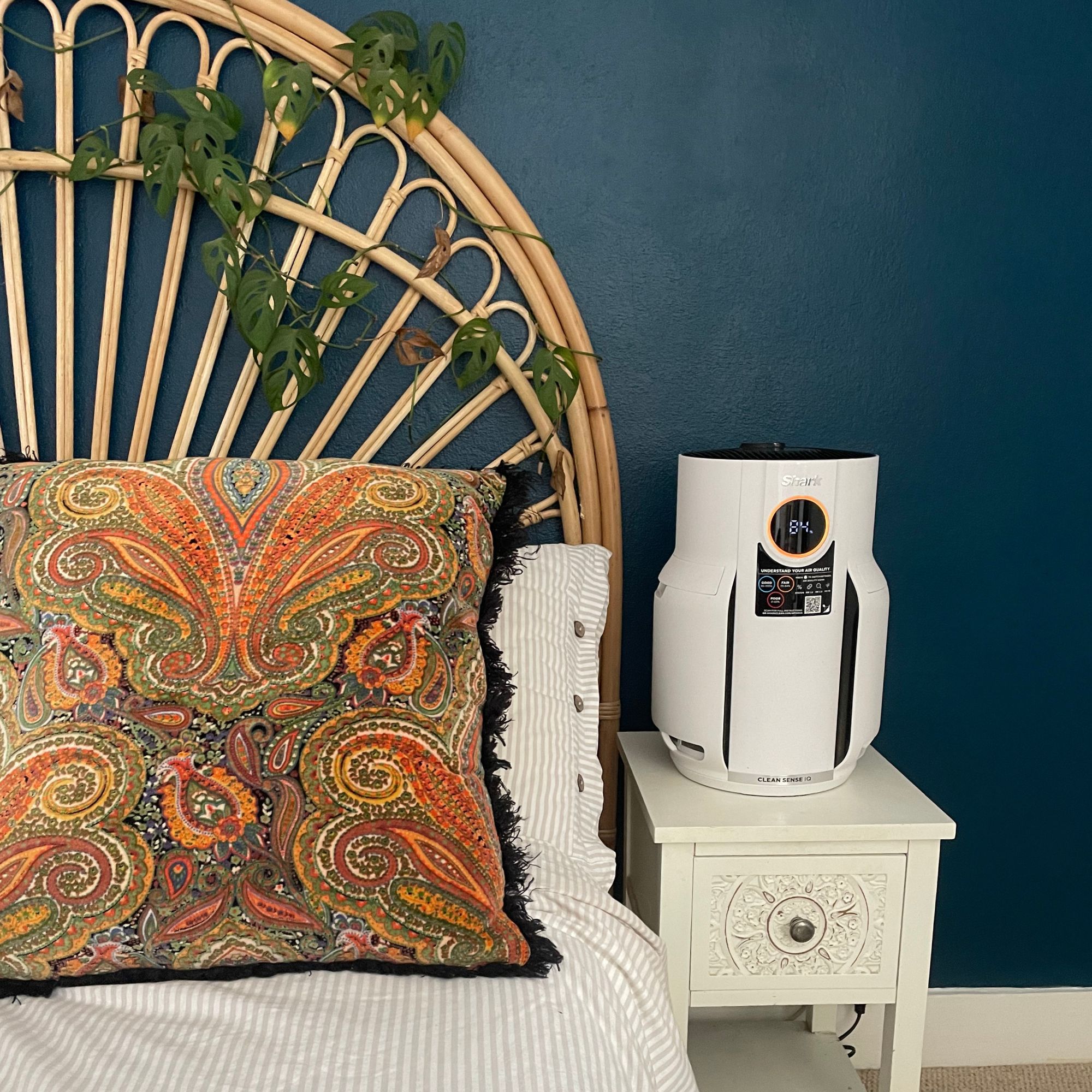
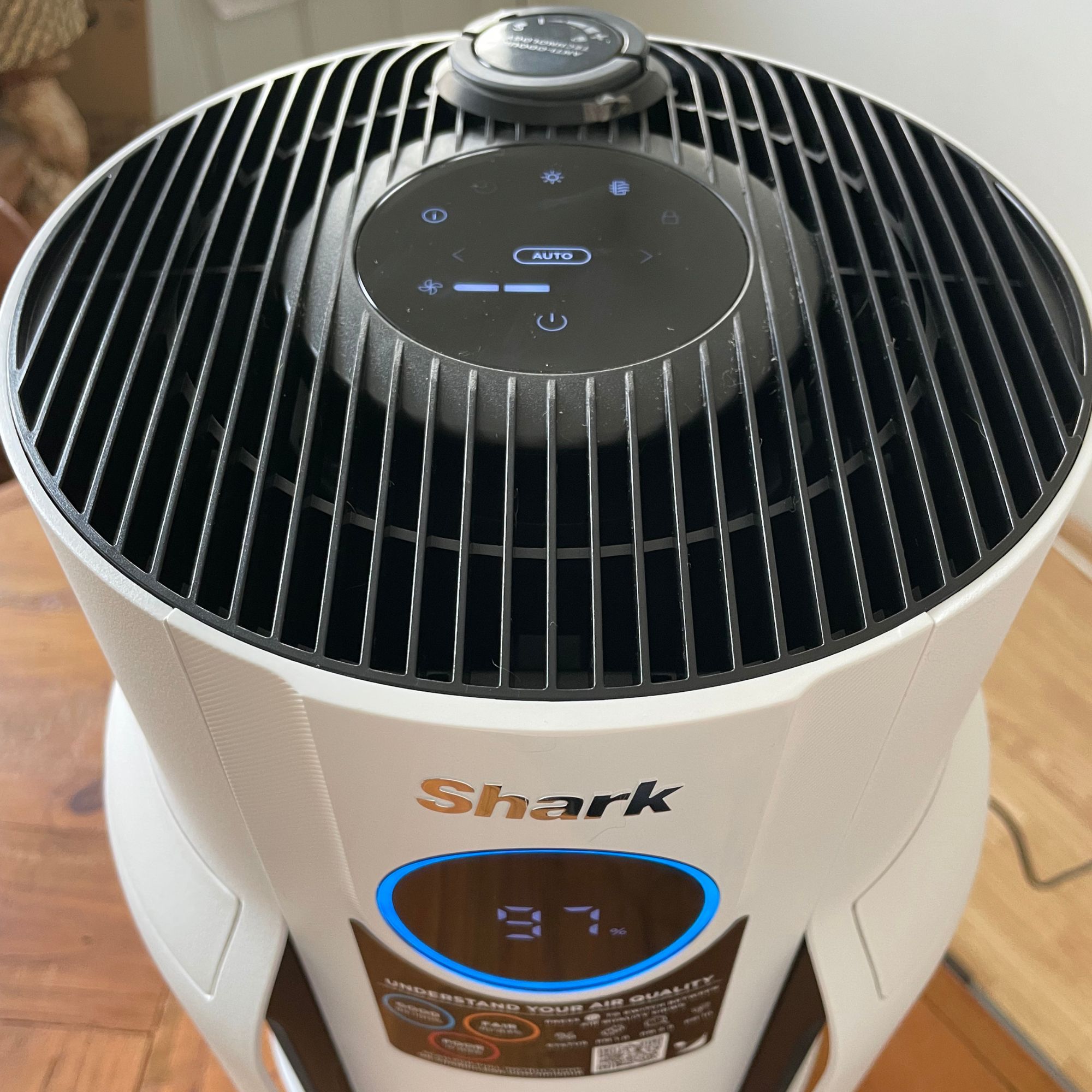
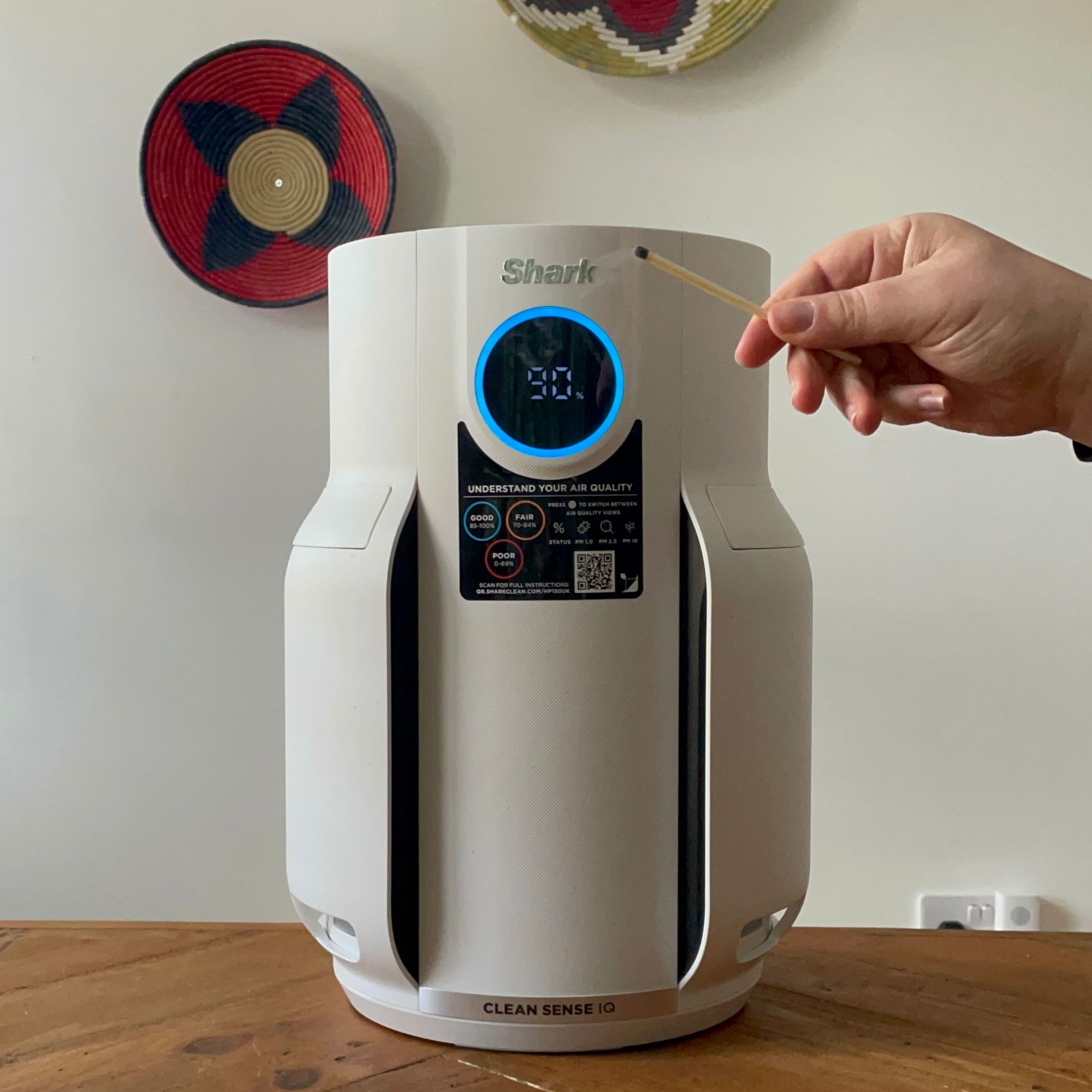
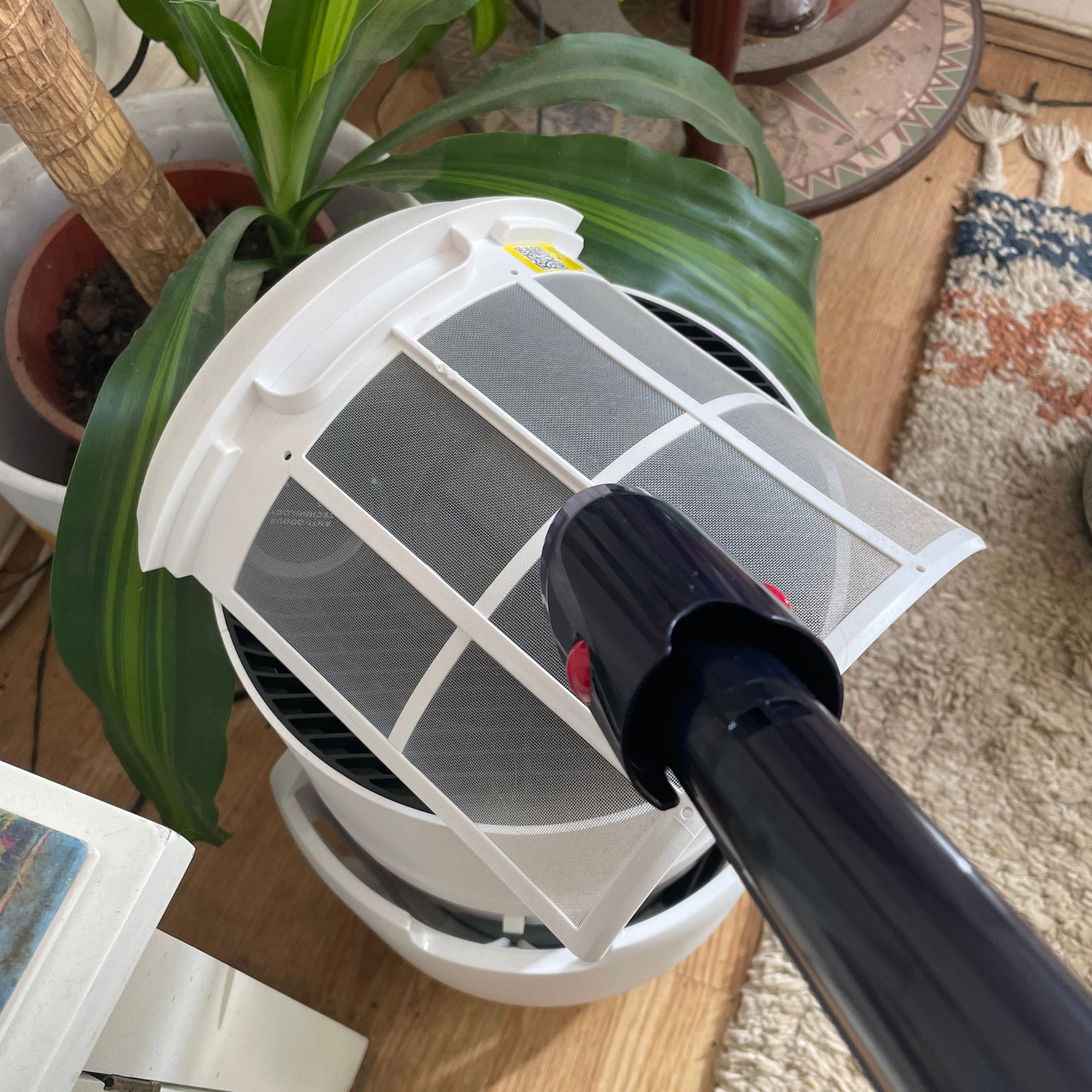
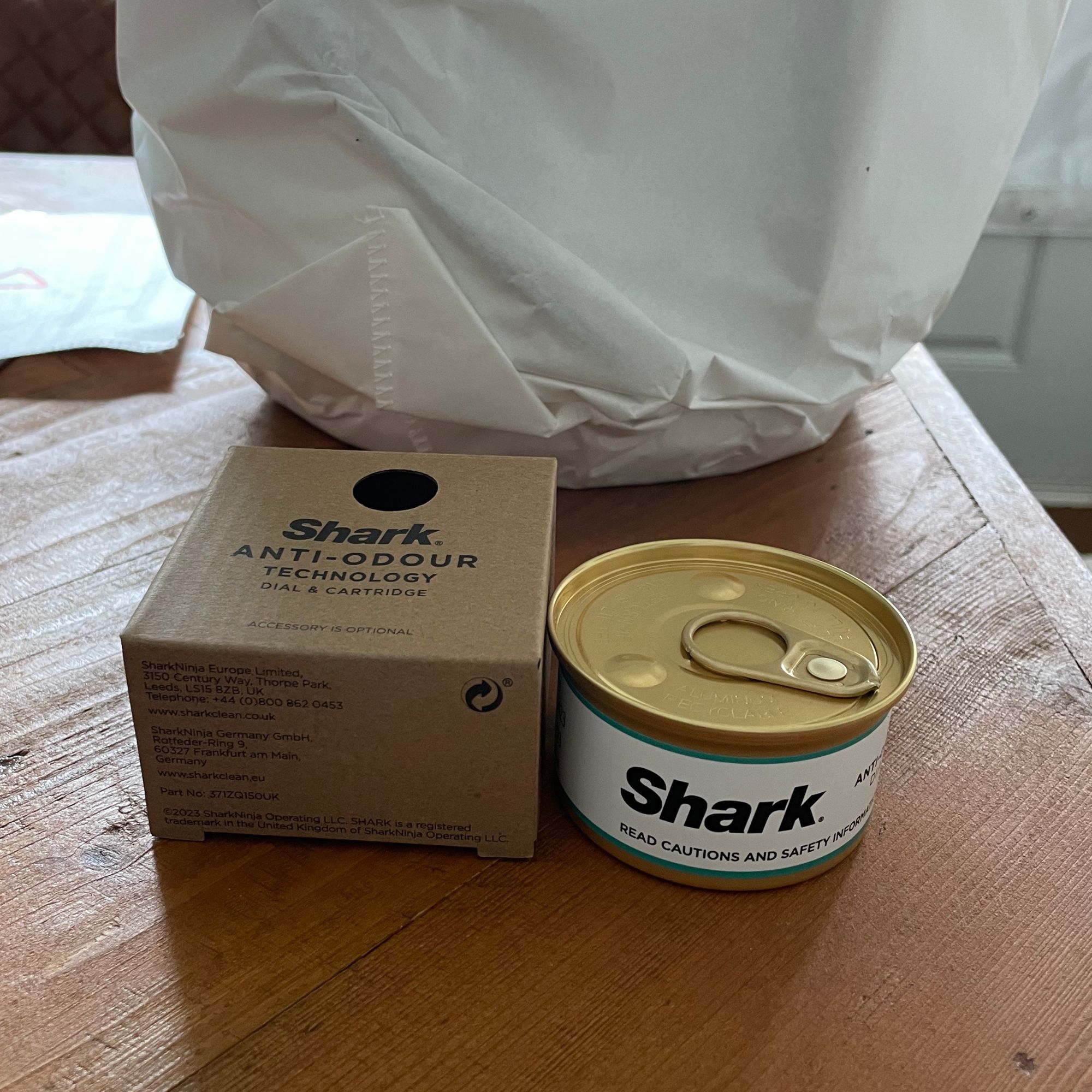

Specifications
Reasons to buy
Reasons to avoid
Famous primarily for its place within the realm of floor care, Shark isn't known for being a big player in the air care game - but it seems they want to change that. In fact, we were genuinely surprised (and incredibly impressed) by the technology and innovations offered by the Shark NeverChange5 Air Purifier. During testing, it made its mark as a responsive, odour-busting model that will undoubtedly stand the test of time.
This is largely due to the brand's claims that you won't need to change the air purifier's filter for five years - supposedly saving you up to £200 on filter replacements. This is certainly a stand-out feature in the long run, but this model proved extremely easy to use and understand during testing. One particular feature our tester loved was the CleanSenseIQ technology, which monitors and reacts to changes in your environment to keep your air quality levels as high as possible.
Plus, with the ability to purify areas up to 60sqm with one air change per hour or rooms of up to 12sqm with 4.8 air changes per hour, it’s perfect for smaller homes. This is also thanks to its four layers of powerful filtration - including a NanoSeal HEPA filter for dust and smoke, DebrisDefence pre-filter, Activated Carbon filter, and Pet Particle Barrier.
The only downsides? The modern, angular, and slightly alien-like design is sure to divide opinions, and there's no Wi-FI connectivity. However, if you're looking for an everyday air purifier that will keep your air quality high and your home smelling divine, the Shark NeverChange5 Air Purifier is a solid choice.
Read our Shark NeverChange5 review for more details.
Best air purifier for larger spaces


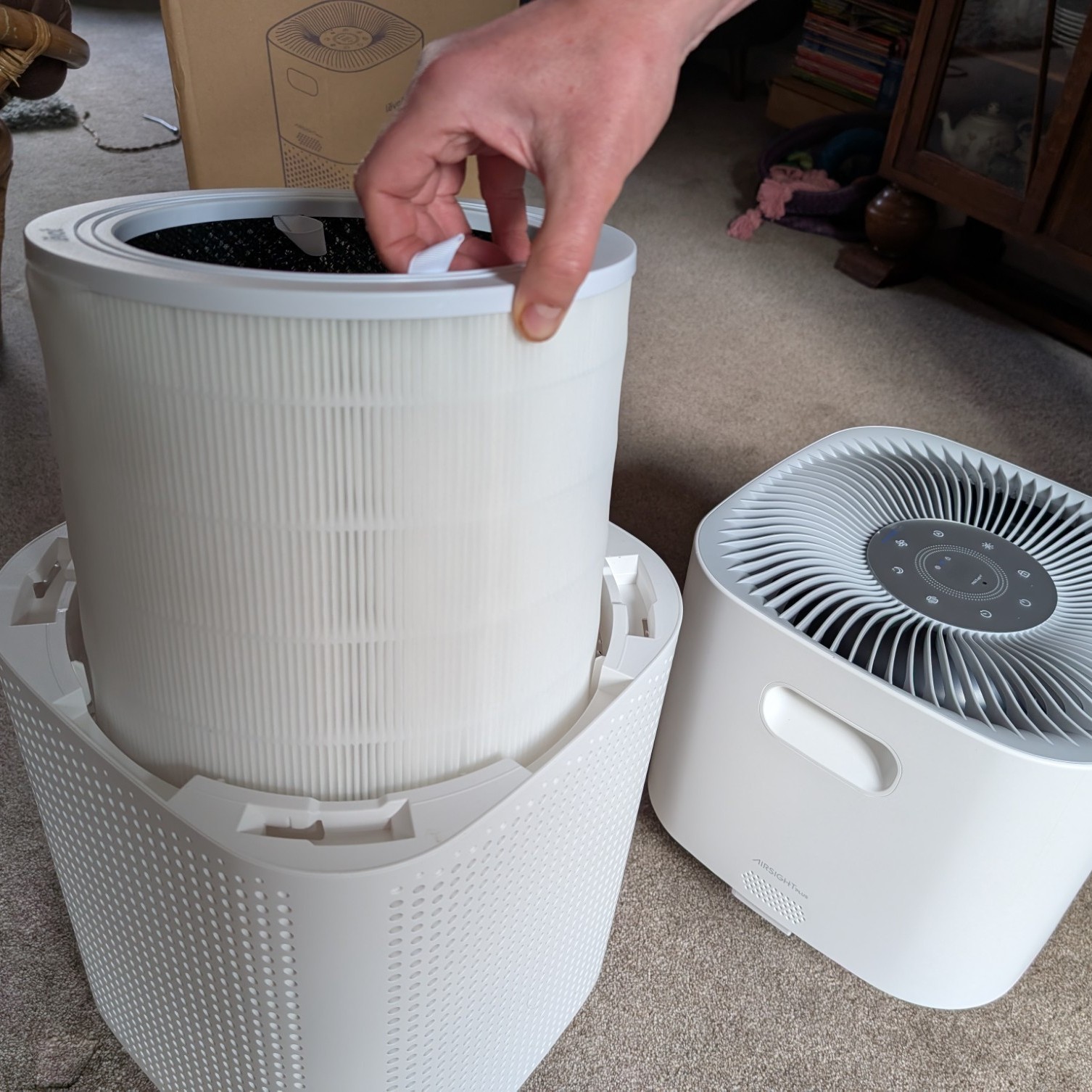
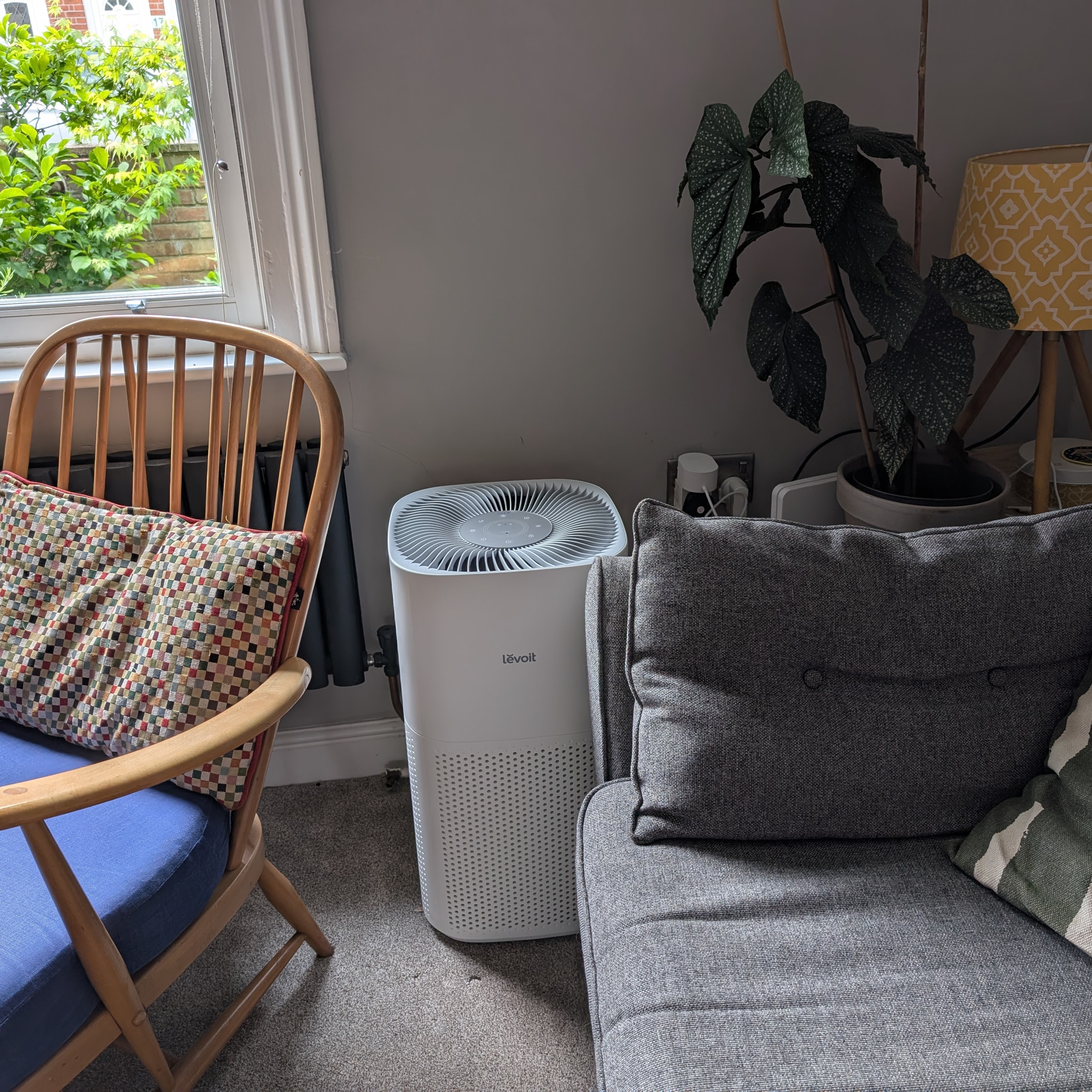

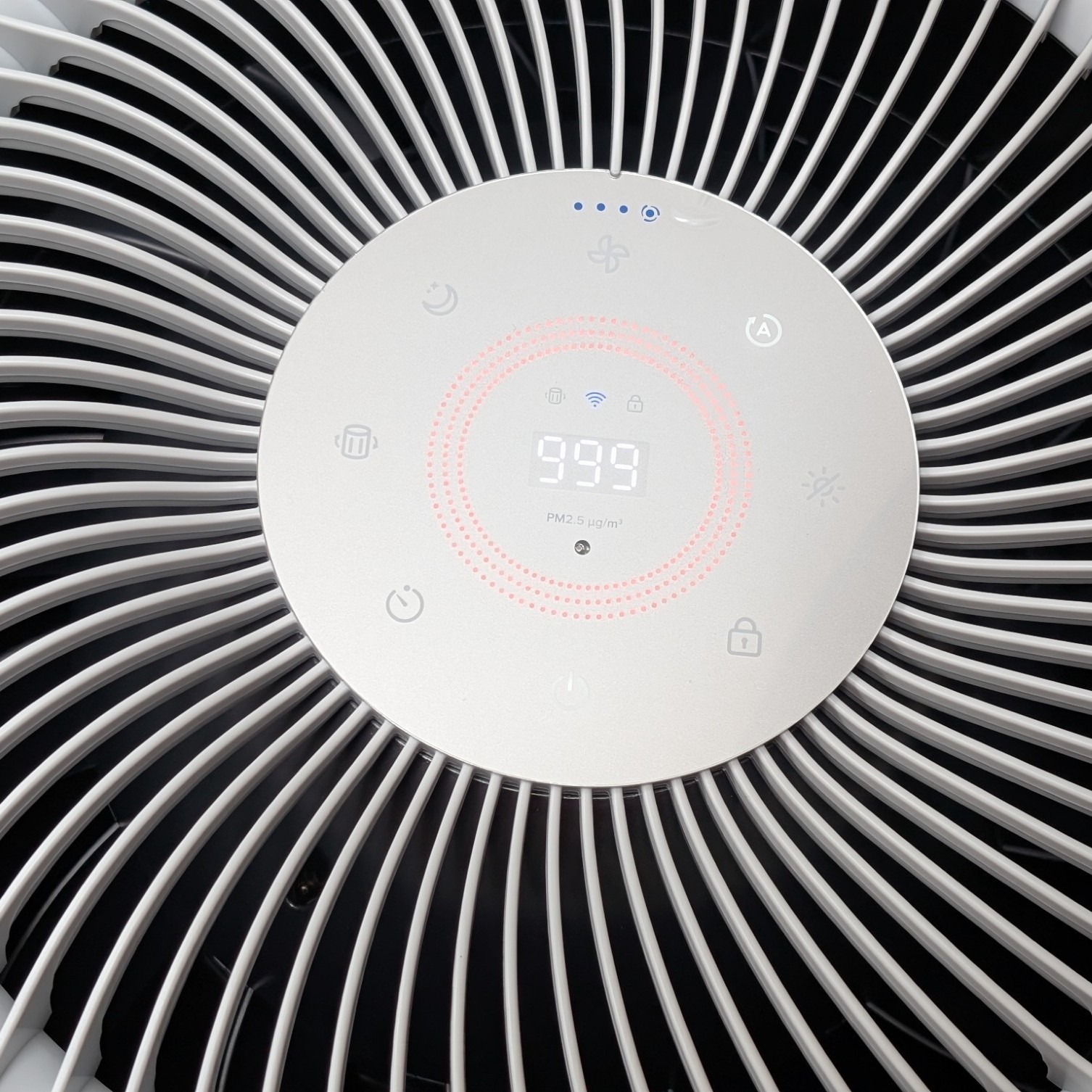


Specifications
Reasons to buy
Reasons to avoid
If you have a larger home and want to enjoy the cleanest air possible, the Levoir Core 600S is our top choice. It's big in power, cleaning capacity and size - which means it'll work wonders to purify your home, but you'll need the space to store it.
If you are willing to get past the large size, we have no doubts that you'll be just as impressed as our tester was. She found the Auto mode to be incredibly responsive to cooking fried foods, lighting matches, vacuum dust, and even spraying deodorant. All the while, it didn't ever go above 50dB, which is equivalent to the hum of a refrigerator.
This air purifier also offers a three-stage True HEPA filter that traps particles as small as 0.3 microns, and while this might not be as impressive as the two Blueair models above, it's still more than enough for everyday use.
The controls are also incredibly easy to use, from the onboard controls to the smart app connectivity. Just be warned that you will need to carve out some space for this model, which makes it more suitable for larger, more open-plan homes.
Read our full Levoit Core 600S review for more details.
Best air purifier and dehumidifier

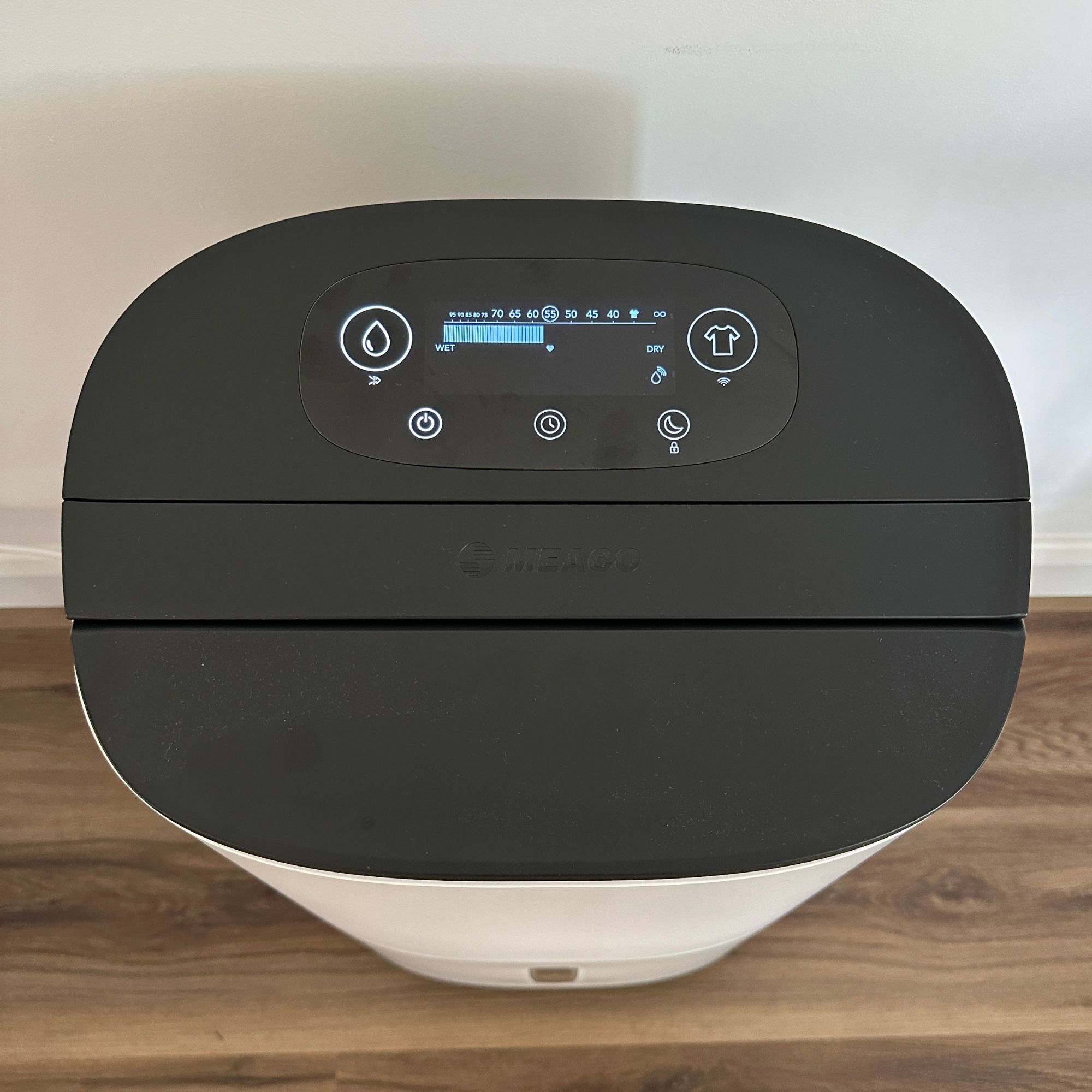
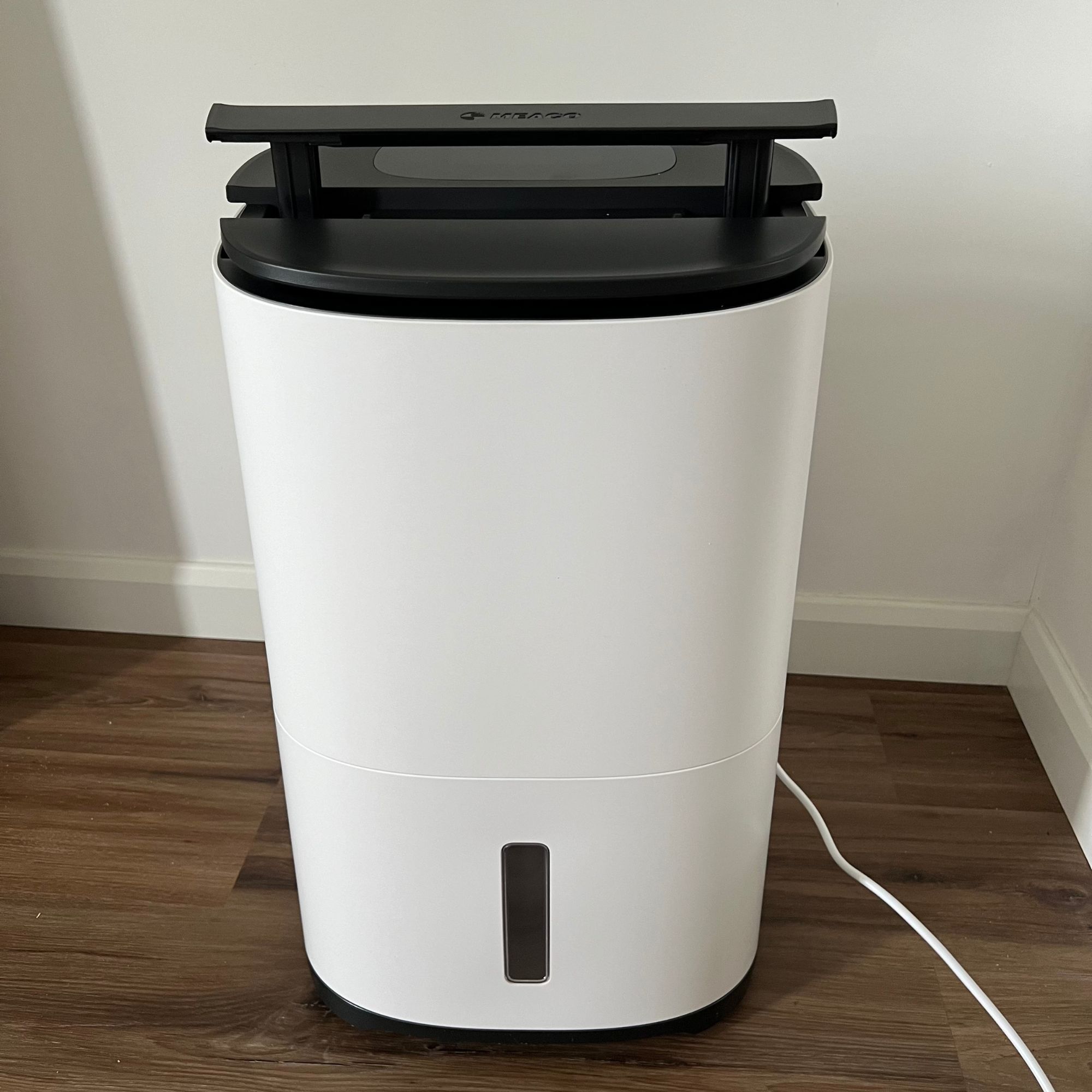
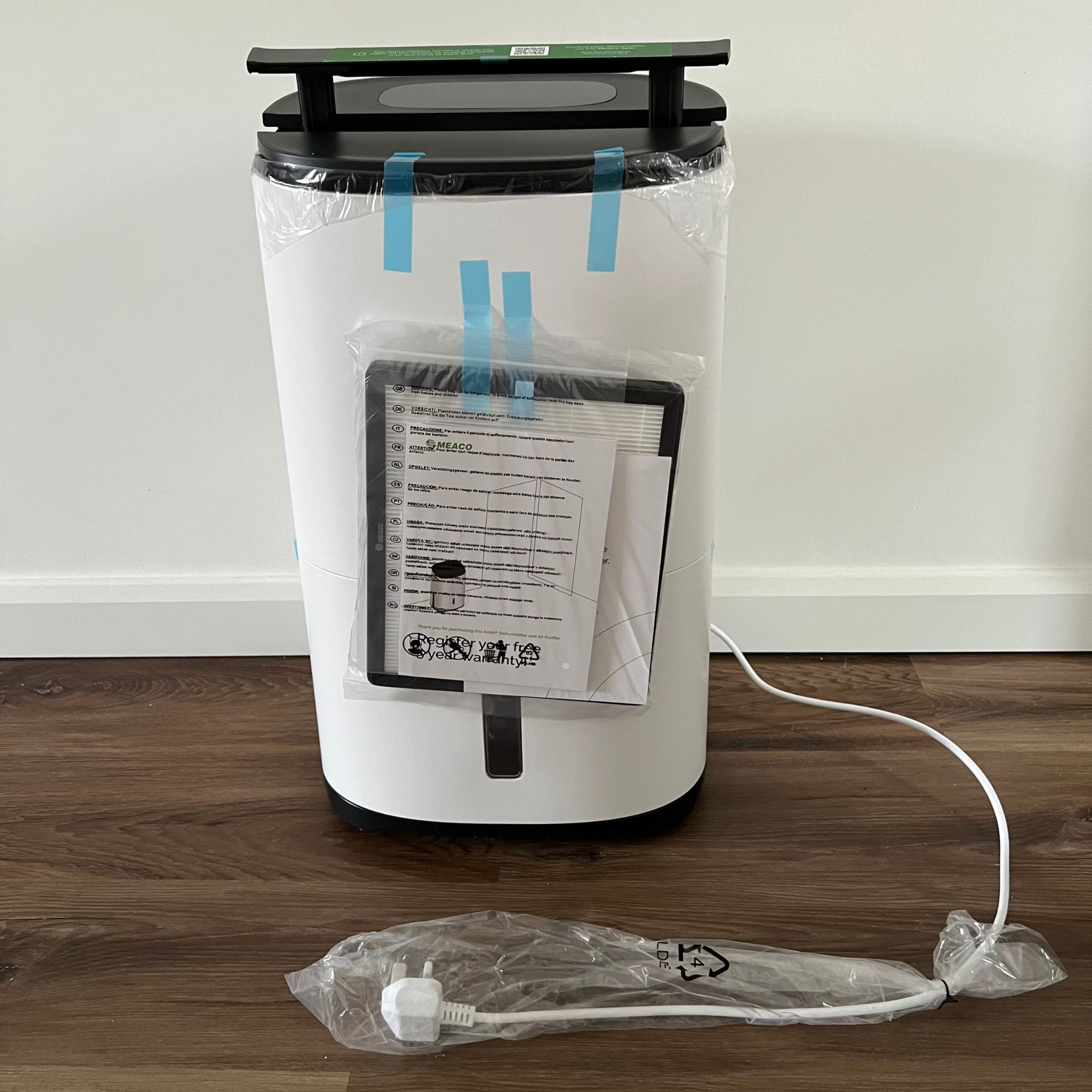

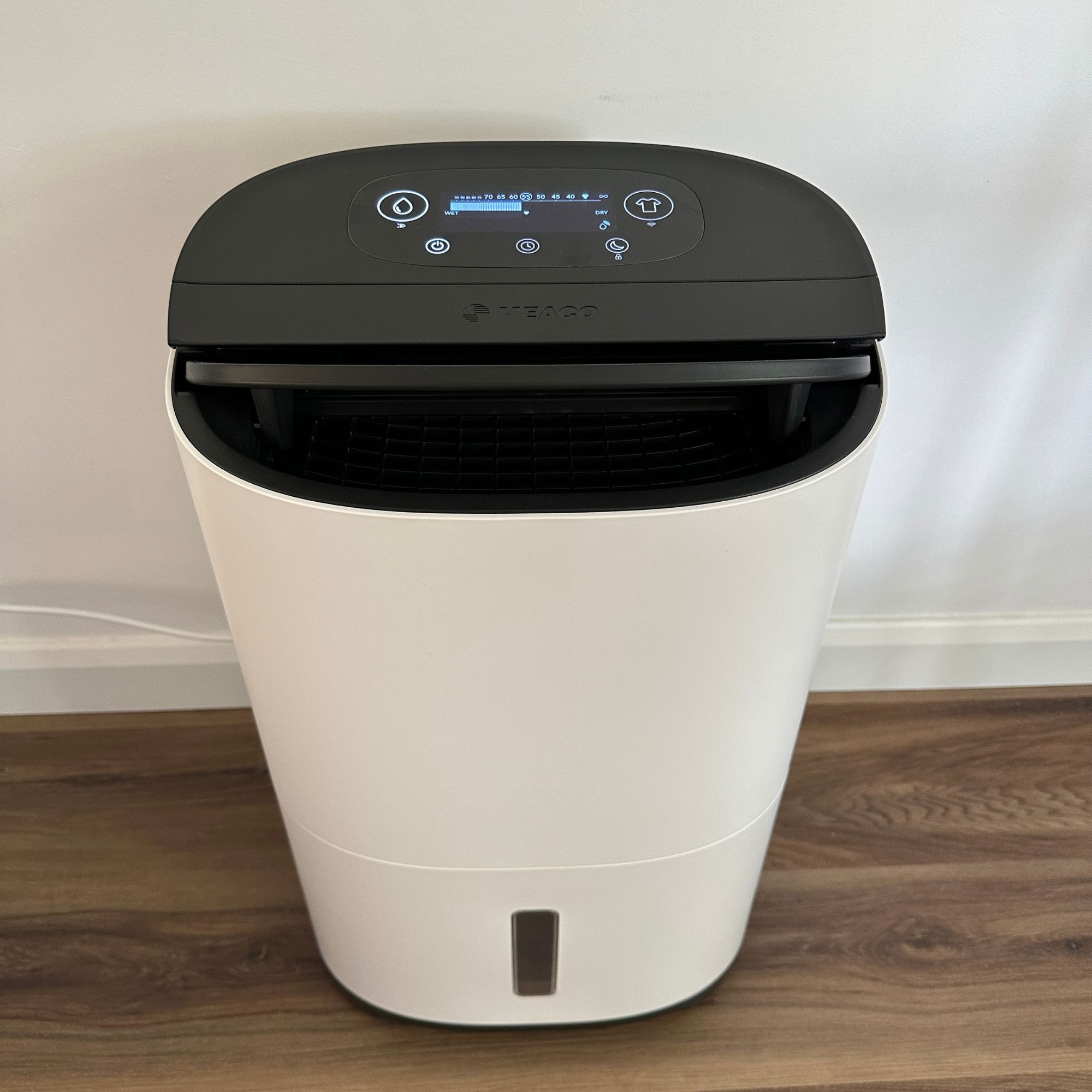
Specifications
Reasons to buy
Reasons to avoid
If your home is prone to excess moisture and damp issues like mould and mildew, then, although many air purifiers can help to remove fungal spores from the air, a dehumidifier is going to be the best option for sucking excess moisture from the air in a poorly ventilated indoor space and preventing moisture-related problems from forming in the first place.
Thankfully you don't have to buy two separate products, with the MeacoDry Arete Two Dehumidifier and Air Purifier offering the best of both worlds. This multifunctional unit gets our vote for the best dehumidifier money can buy thanks to its high moisture extraction rate, generous water tank, quiet operation, easy-to-use design, and energy-efficient performance. Its Smart Laundry Mode also makes quick work of drying wet washing. Plus, this newest iteration in the Arete series also solves some of the biggest issues we had with its previous generation, now offering Wi-Fi connectivity, a timer, and an auto mode for even more convenience.
You can choose from four size options, that extract 10, 12, 20 or 25 litres of moisture from the air per day respectively, and all offer H13 HEPA filters to improve indoor air quality in more ways than one. That said, because the Arete Two is a dehumidifier first and foremost, you won't get the nuanced air purification you can expect from a standalone air purifier. However, if you're looking to solve damp and air quality issues in one fell swoop, the Arete Two offers great versatility and a lot of bang for your buck.
Read our MeacoDry Arete Two Dehumidifier & Air Purifier review for more details.
Best air purifier, fan and heater




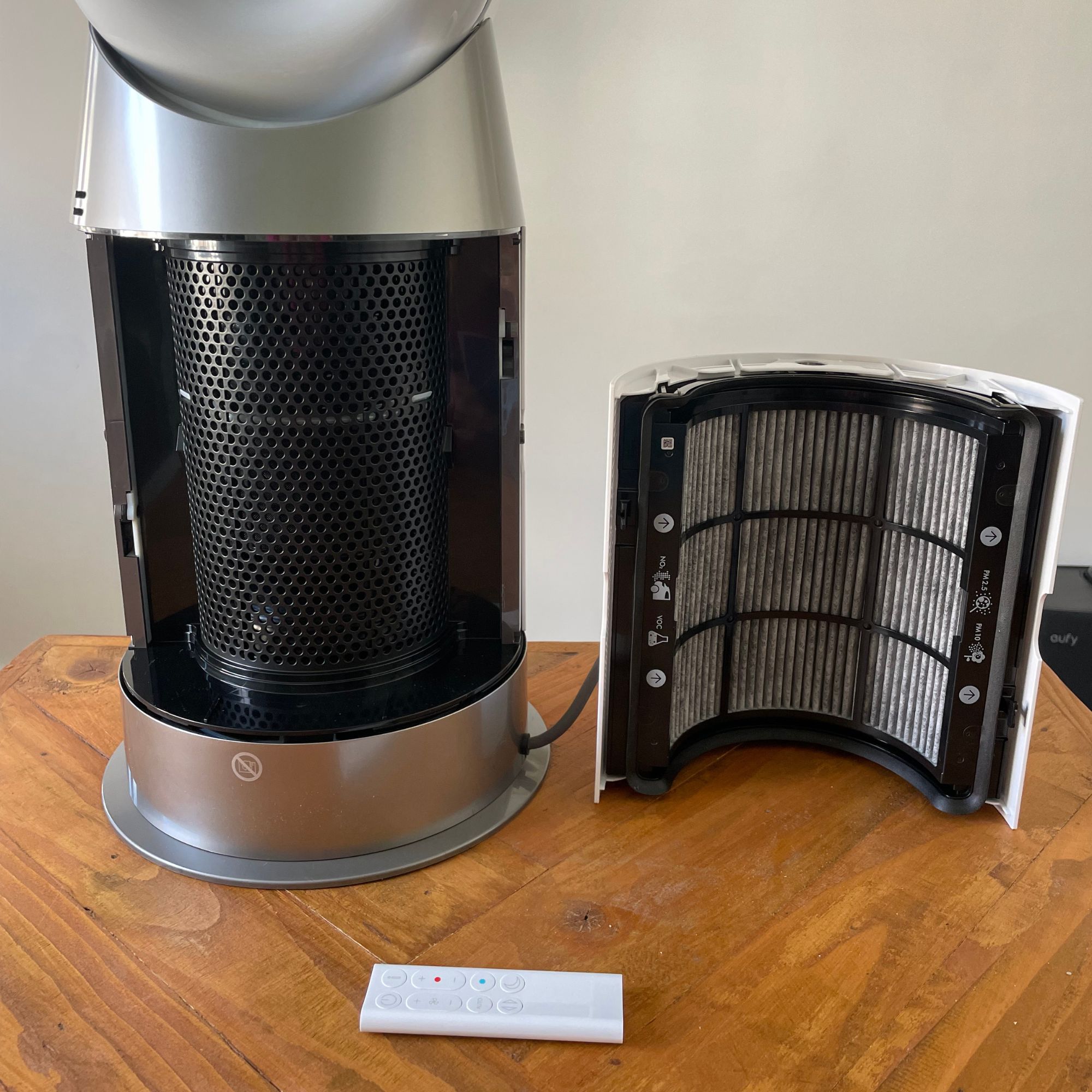
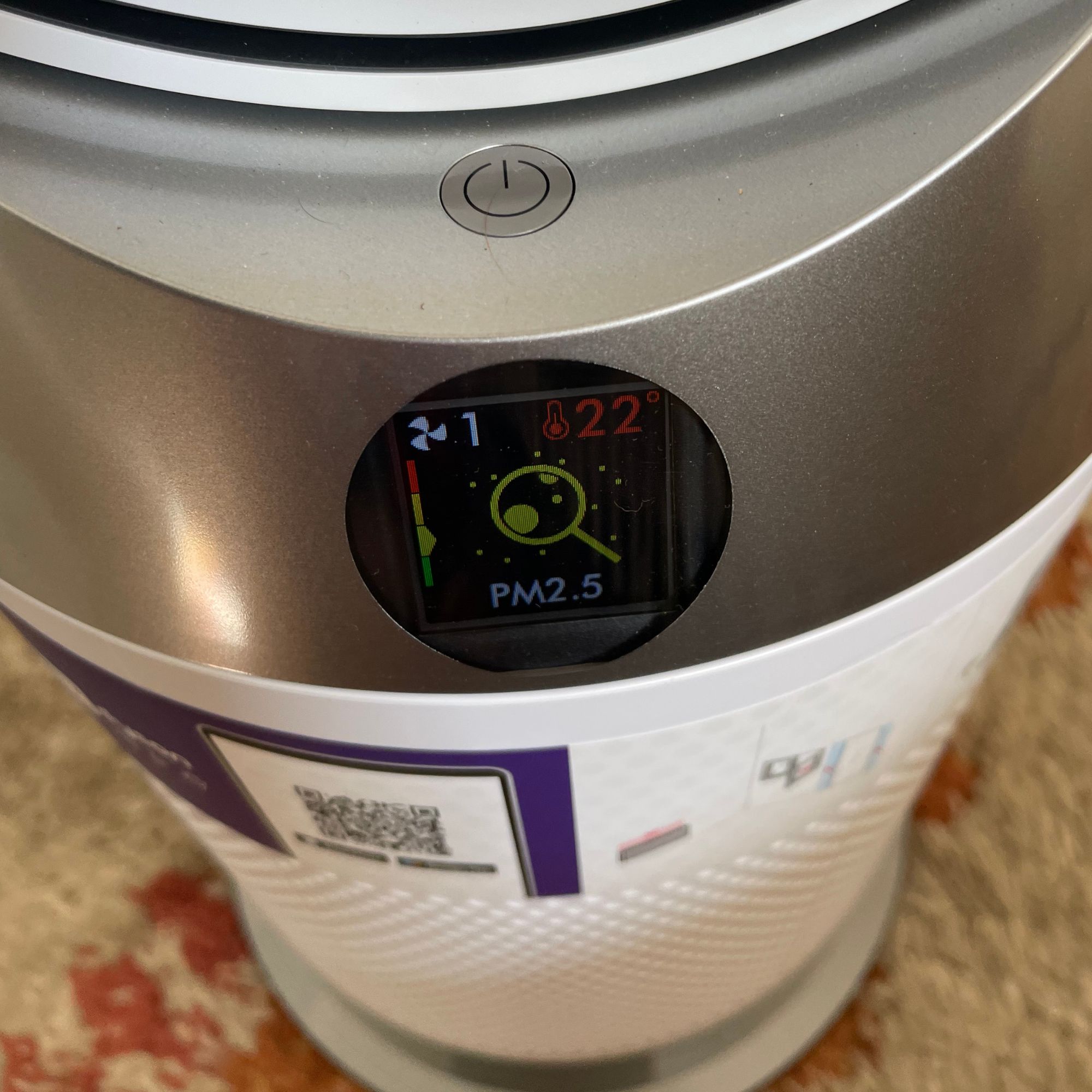
Specifications
Reasons to buy
Reasons to avoid
If you want to consolidate your many products into one all-in-one appliance, the Dyson Purifier Hot+Cool HP1 offers just that. As well as serving as an impressive and effective air purifier, it can also compete with the best electric heaters during the winter months and the best fans in summer.
It's very effective, too, and while it's not as responsive or as powerful as other brands such as Blueair and Levoit - after all, it only captures 99.95% of pollutants - it offers easy air purification without making a fuss. You can simply pop this appliance in the corner and let it work its magic while also keeping you - and your home - the perfect temperature.
During testing, the Dyson air purifier worked hard to keep pollutants to a minimum and my air quality level, especially on Auto mode. It's also incredibly easy to track and control your air quality reading both on the appliance itself and through the easy-to-use app.
And while the sleek bladeless design is very Dyson and the 3-in-1 functionality is ideal for year-round use, it's worth noting that this is a big appliance. So, if you only need an air purifier, it might not be the option for you.
Read the full Dyson Purifier Hot + Cool HP1 Purifying Fan Heater review for more details.
Best of the rest
I've reduced my shortlist of the best air purifiers to my six top options, but there are a few other alternatives that I think are well worth a mention if the above options don't suit your home or air quality needs.
Blueair Mini Restful Sunrise Alarm Clock Air Purifier (★★★★½ )
This new Blueair model isn't just an air purifier - it's also a sunrise alarm clock to help you wake up during the darker mornings. In fact, it'll purify up to 99.97% while waking you up gently to soothing sounds and sunlight.
Read more about the Blueair Mini Restful Sunrise Alarm Clock Air Purifier here
Philips Pure Protect Mini 900 Series Smart Air Purifier (★★★★½ )
Quiet, efficient and low maintenance, this air purifier is ideal for everyday use. Its smart app connectivity also means that you can control everything from your phone.
Read our full Philips Pure Protect Mini 900 Series Smart Air Purifier review here
Levoit Core 300S Air Purifier (★★★★½ )
Another Levoit offering is the 300S, which will suit those with smaller rooms. The 3-stage Pre-Filter, HEPA Filter and Activated Carbon Filter allow for impressive air cleaning, and it's both compact and lightweight.
Levoit Sprout Air Purifier (★★★★½ )
Perfect for children's bedrooms, this air purifier also has a built-in night light and white noise machine. Our Senior Digital Editor, Jenny, found that it instantly improved her daughter's cold symptoms.
Meaco MeacoClean CA-HEPA 76x5 (★★★★½ )
Although it's an older model, this Meaco air purifier still impressed us. It has smart functionalities that mean you can control everything by an app, and it's easy to set up. It's not the most stylish air purifier, but it works a treat.
Dryzone Dehumidifier & Air Purifier (★★★★½ )
If you want a 2-in-1 air purifier and dehumidifier, this one is both portable and sleek. It has a medical-grade HEPA filter to improve air quality and an automatic humidity sensor to control your humidity level.
Blueair ComfortPure 3-in-1 T10i Air Purifier (★★★★½ )
Another 3-in-1 option is this Blueair offering, which is a little more compact than the Dyson. You can set it to purify, heat or cool, which makes it the perfect all-rounder for everyday use throughout the year.
Blueair Blue Pure 511 Air Purifier(★★★★)
This is the older version of the Blueair 511i, and even cheaper than the newer model. It doesn't have an app or smart connectivity, but it's a great budget-friendly option if you don't need that.
Read our full Blueair Blue Pure 511 Air Purifier review here
Air purifier comparison at a glance
Air Purifier | Price | Ideal Home Rating | Brand Trustpilot Score | Recommended Room Size | Noise Levels | Filter Type |
£149 | 5 stars | 2.6 stars | 48m² | 18-46dB | 3-Stage Pre-Filter, HEPASilent Filter | |
£129.99 | 4 stars | 2.6 stars | 22m² | 19-48dB | Pre-filter, particle filter, activated carbon, HEPASilent | |
£249.99 | 4.5 stars | 4.5 stars | 60m2 | 38-66dB | NanoSeal HEPA layer, Activated Carbon layer, Pet Particle Barrier, DebrisDefence pre-filter | |
£299.99 | 4.5 stars | 2.5 stars | 294m² | 23-50dB | True HEPA and activated carbon plus pre-filter | |
From £199 | 5 stars | 4.2 stars | 42m² - 90m² | 35dB - 42dB | H13 HEPA Filter | |
£549.99 | 4.5 stars | 2.5 stars | 81m³ | 60dB-70dB | 360 Combi Glass HEPA + Activated Carbon filter |
How we test air purifiers
You'll find full details of the Ideal Home review process on our how we test page, and we also have a detailed explainer of how we test air purifiers that goes into the specifics of our testing process.
Our team of reviewers tested a host of the best air purifiers on the market to compile this guide, reviewing them for at least two weeks (or longer if possible).
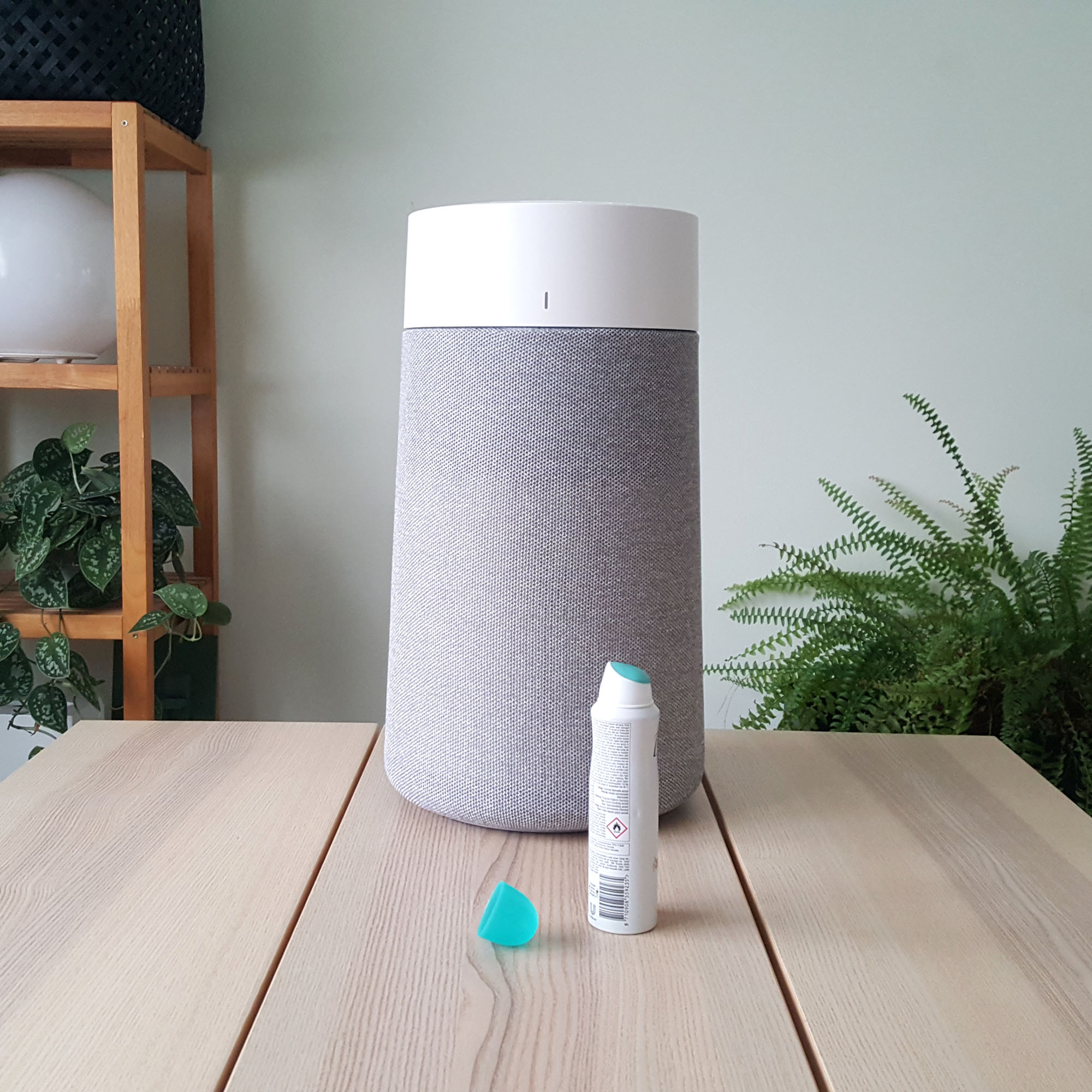


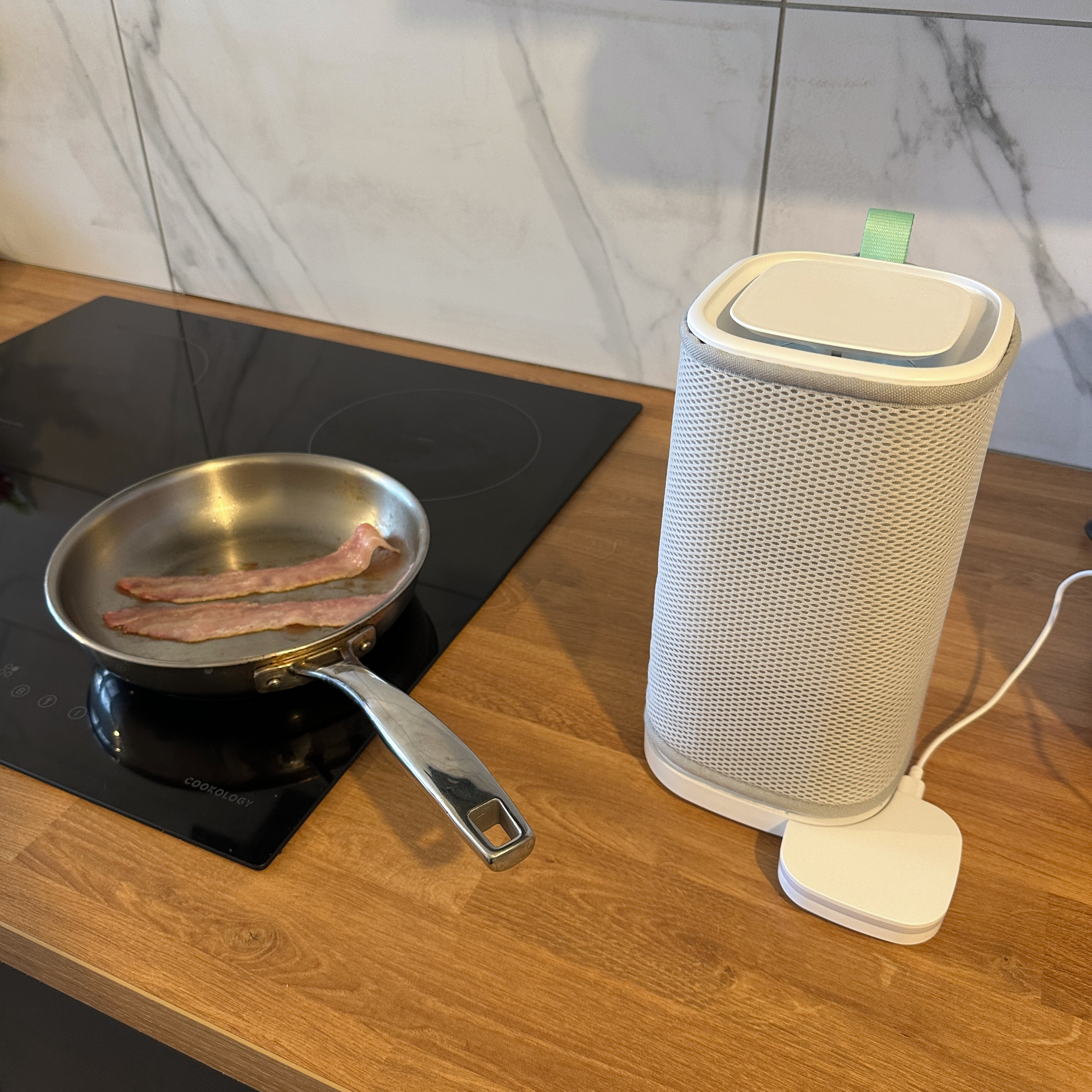
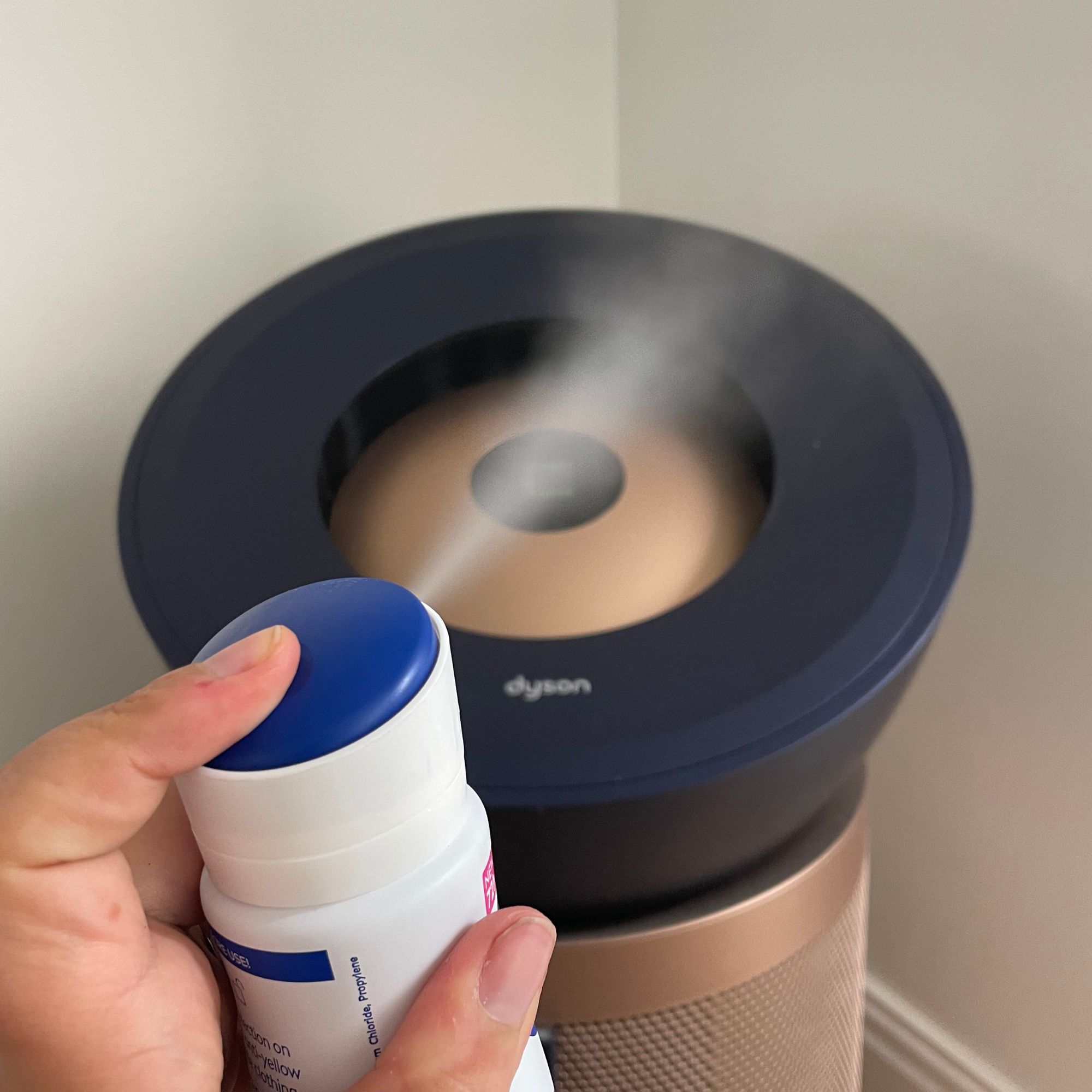
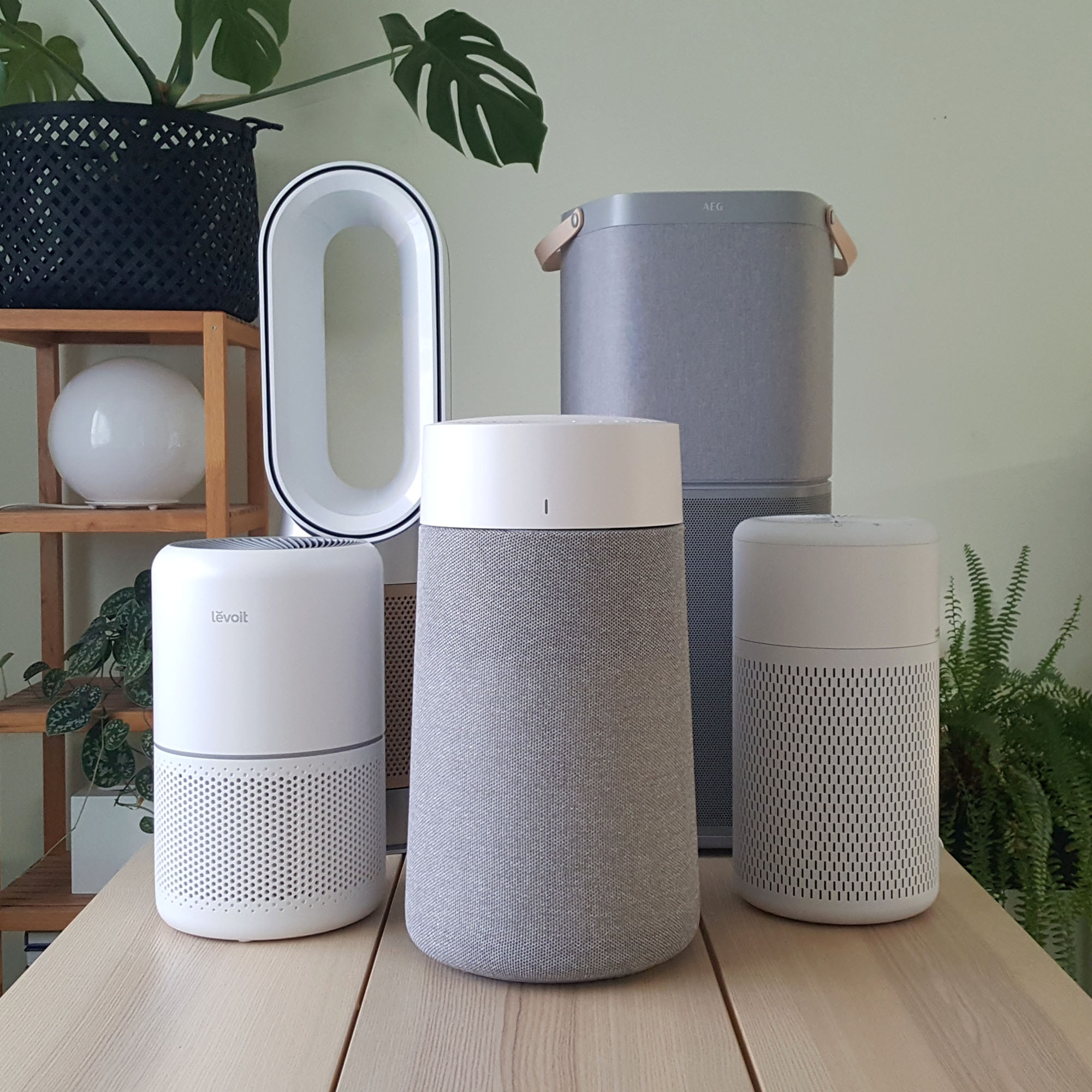





We compared each air purifier's assembly and set-up process, its design, ease of use, CADR (Clean Air Delivery Rate), HEPA air filter performance, energy consumption, and noise levels to compile our top recommendations.
Each air purifier was put through its paces in a real-life home environment to test how well it filtered out cooking fumes when frying bacon, how quickly it removed smoke and VOCs from the air, and how well it combatted dust.
Meet our testers

Lauren is the Content Editor for House Manual, focusing on both floor care and air care. She compiled this guide based on her own review process and air quality expertise.
In this guide, Lauren tested the Shark NeverChange5 Air Purifier - and it's since become her go-to appliance for a clean home. She also tested the Dyson HP1 Hot + Cool.

Amy is currently Ideal Home's Certified Expert for Sleep, but was previously our E-Commerce Editor for all manner of small home appliances - including air purifiers.
She tested the top-rated air purifier on this list in her home, analysing everything from its CADR rating to its size and even its WiFi connectivity.

Jullia has tested countless household appliances for Ideal Home, including vacuums, dehumidifiers, and air purifiers.
She has hands-on experience with some of the biggest air purifier brands out there, and followed our strict testing criteria to review these products. For this guide, she tested the Meaco Arete Two.

Katie has been reviewing products for Ideal Home for many years now. She has tested countless air purifiers, including the Blueair Blue 511i in this guide.
When she's not testing air purifiers, she's also reviewing vacuums, coffee machines, and carpet cleaners.
How to choose the best air purifier
It would be nice to think that we could all rely on good air quality as a standard, however, with increasing levels of pollution both inside and out, many of us are turning to air purifiers to help counteract potentially harmful particulates in the air.
But what should you be looking for when you shop for the best air purifier? We've broken down the essentials to help you invest in the right air purifier for you. You can also read a more detailed explainer in our guide on which type of air purifier you should buy.

Clean Air Delivery Rate (CADR)
The CADR measures the volume of air the air purifier can filter, or clean, in a given timeframe. That measurement is usually given per hour, in which case it's measured as m3/h.
That means that the higher the CADR rating of an air purifier, the faster it will be able to clean the air, and the larger space it will be able to purify - but these are typically more expensive. An air purifier with a low CADR rating may not be as effective in removing pollutants from the air, but will typically be cheaper.
Recommended room size
Almost all air purifiers come with a manufacturer's recommendation for the maximum room size they are suitable for, usually measured in m2. It's essential to buy an air purifier that matches the size of the space you want to filter; otherwise, it will struggle to purify the air adequately.
If your home is on two levels, and you don't want to carry the air purifier up and down stairs continually, that may mean investing in more than one air purifier. Our guide to 'how many air purifiers do I need' has more advice for choosing the right number of appliances to manage your indoor climate effectively.
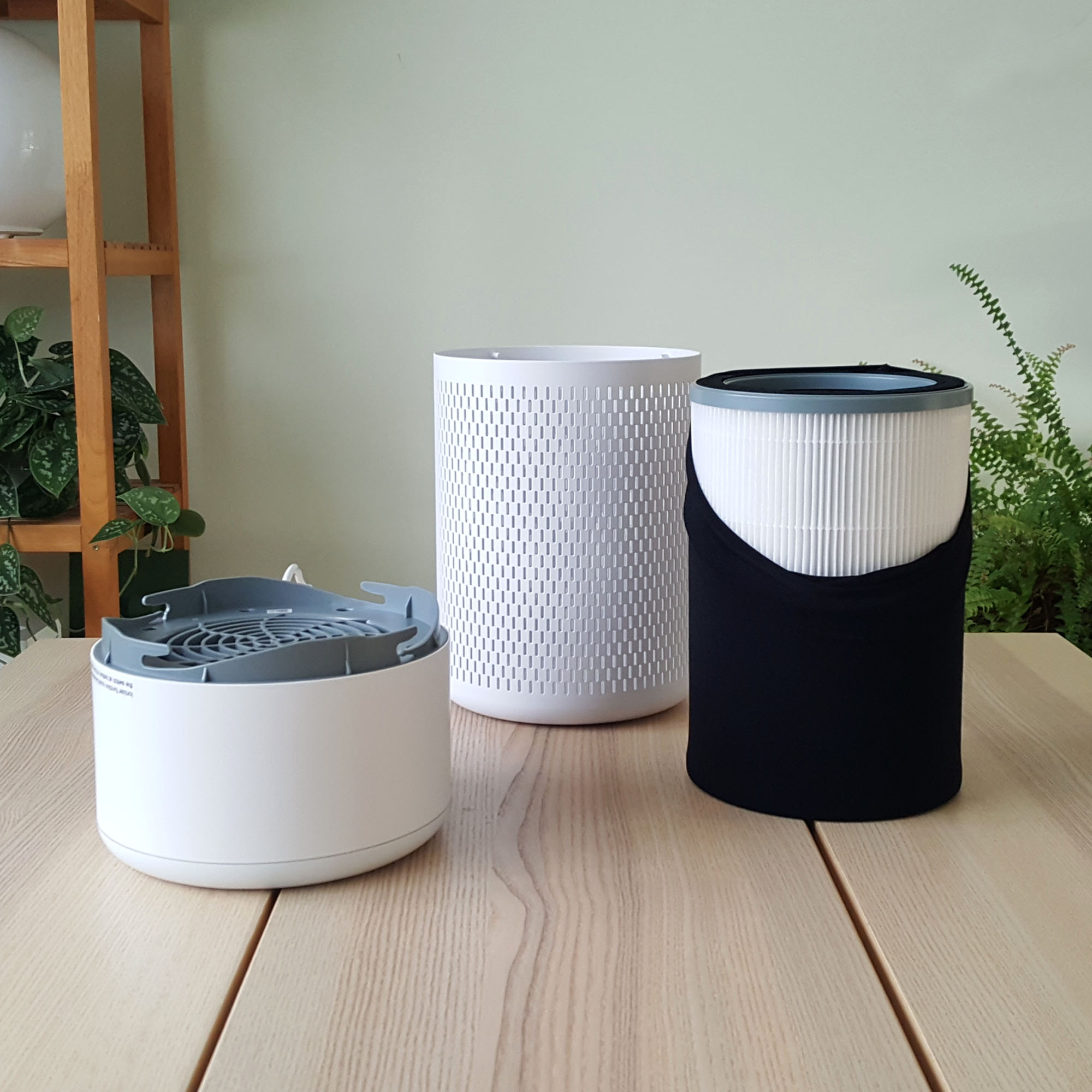
Filter type
Knowing which type of air purifier is best for you typically depends on the filter type. These include:
HEPA Filter: A HEPA filter (shorthand for high-efficiency particulate air filter) is the common standard in air purifiers. It will remove at least 99.97% of airborne particles with a size of 0.3 microns (µm) from the air. This is the filter that can help the most if you suffer from things like pet allergies or hay fever.
Active Carbon Filter: An active carbon filter is generally thought to filter microscopic particles from the air, like traffic fumes, cigarette smoke, and Volatile Organic Compounds (VOCs) that carry unpleasant smells. They can even remove viruses from the air.
Ionisation: Some air purifiers also use ionisation, which is where they push negatively charged ions into a room to combat other allergens. This isn't as common, and should be bought with caution, as they can release harmful ozone.
Of course, it's also worth noting that you need to regularly clean an air purifier and its filter to maintain its efficiency.

FAQs
Do air purifiers really work?
If you live in an area with poor outdoor air quality, high road traffic pollution, or are sensitive to pollen, air purifiers are definitely worth it.
An air purifier works by using a fan to draw air into the air purifying unit whereby it passes through a series of filters that remove particulate matter. The cleaned air is then discharged back into the room. As such, a decent air purifier can be a good way to improve indoor air quality and is worth the investment for those with allergies or sensitivity to airborne pollutants.
Do air purifiers remove smells?
Yes, a good air purifier can remove smells and odours from your home. The best air purifiers for removing smells are those with Activated Carbon Filters alongside the usual HEPA filter. The Activated Carbon can help to remove Volatile Organic Compounds (VOCs) and their accompanying smells – such as the particulates from a scented candle, cleaning products or aerosol deodorants – as well as things like fumes and odours from cooking fumes and pets.
The Blueair Blue Max 3250i Air Purifier is our top recommendation for the best air purifier for removing smells, making short work of removing fried plant-bacon fumes from our test kitchen.
Is there a downside to air purifiers?
If you want to improve the air quality in your home, there are very few downsides to air purifiers. Generally, the positives outweigh the negatives by a mile, but there are some features of an air purifier that may be considered downsides. These include:
- The price: higher-quality air purifiers tend to be more expensive than the lesser-quality options on the market.
- The noise: it's hard to find an air purifier that doesn't make a noise, which can be distracting if you want to run it while you're sleeping.
- The maintenance: air purifiers do need to be regularly cleaned and maintained for them to continue cleaning your air. You may also need to replace filters.
- The running costs: although they won't cost you a fortune, air purifiers will add to your energy bills - like all extra electrical appliances.
Sign up to our newsletter for style inspiration, real homes, project and garden advice and shopping know-how

Lauren Bradbury has been the Content Editor for the House Manual section since January 2025 but worked with the team as a freelancer for a year and a half before that. She graduated with a Bachelor’s degree in English and Creative Writing from the University of Chichester in 2016. Then, she dipped her toe into the world of content writing, primarily focusing on home content. After years of agency work, she decided to take the plunge and become a full-time freelancer for online publications, including Real Homes and Ideal Home, before taking on this permanent role. Now, she spends her days searching for the best decluttering and cleaning hacks and creating handy how-to guides for homeowners and renters alike, as well as testing vacuums as part of her role as the Ideal Home Certified Expert in Training on Vacuums, having spent over 110 hours testing different vacuum models to date!
- Amy LockwoodSleep Editor
